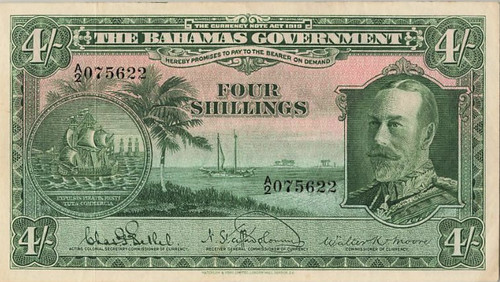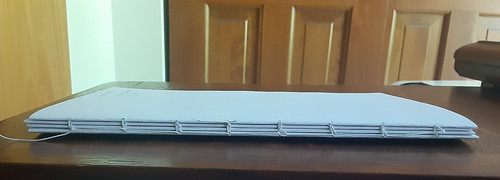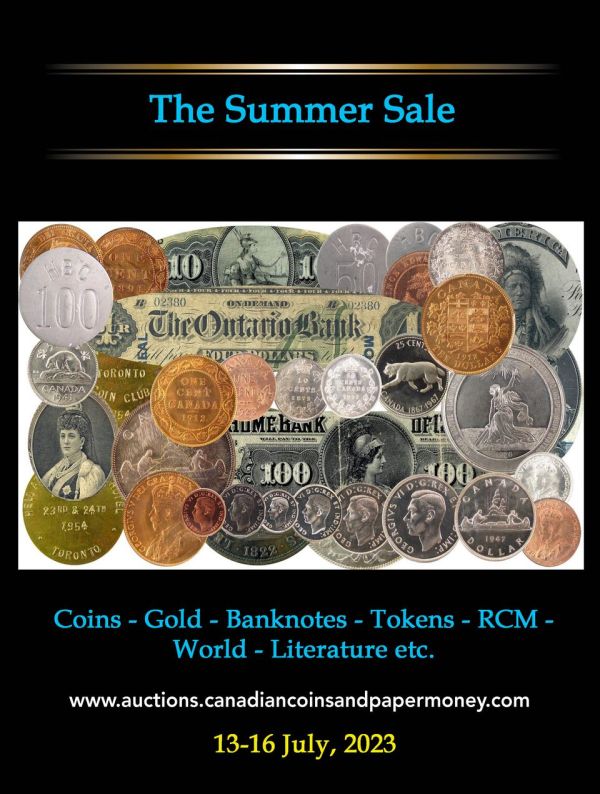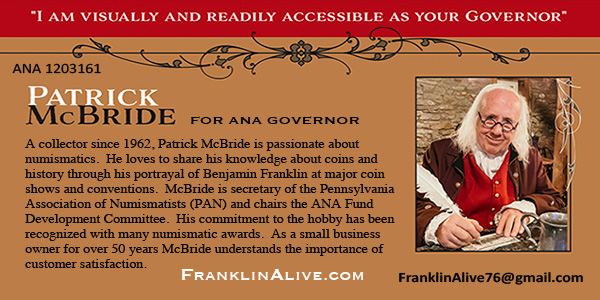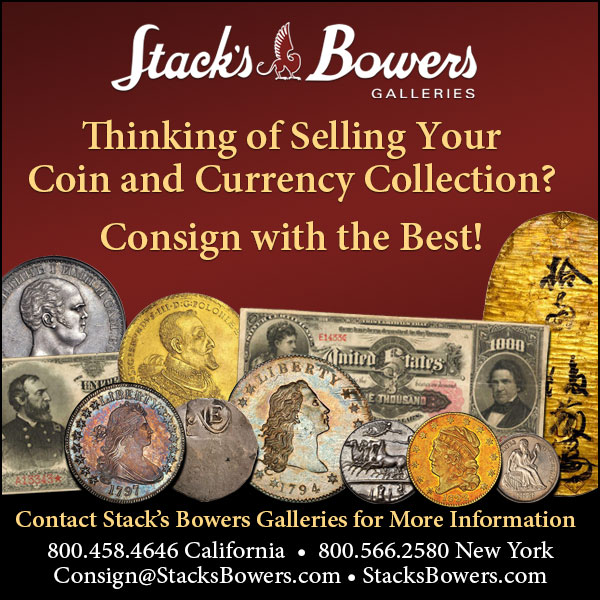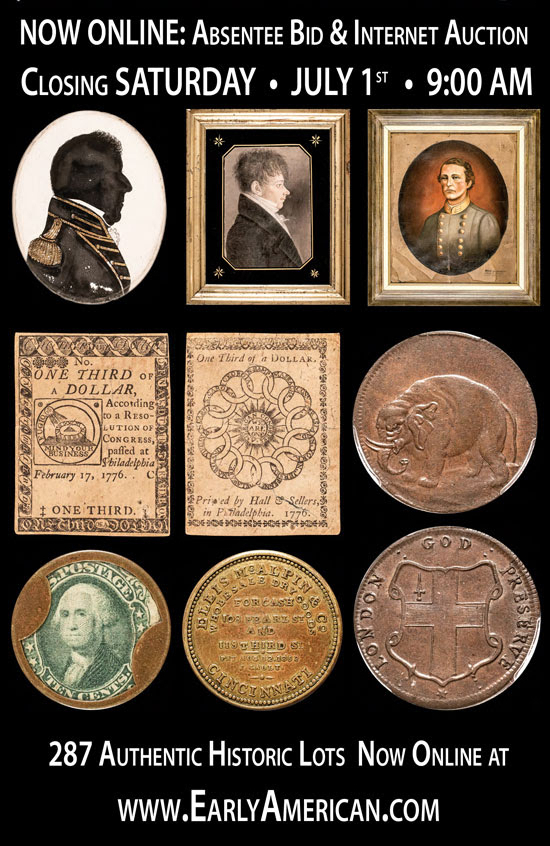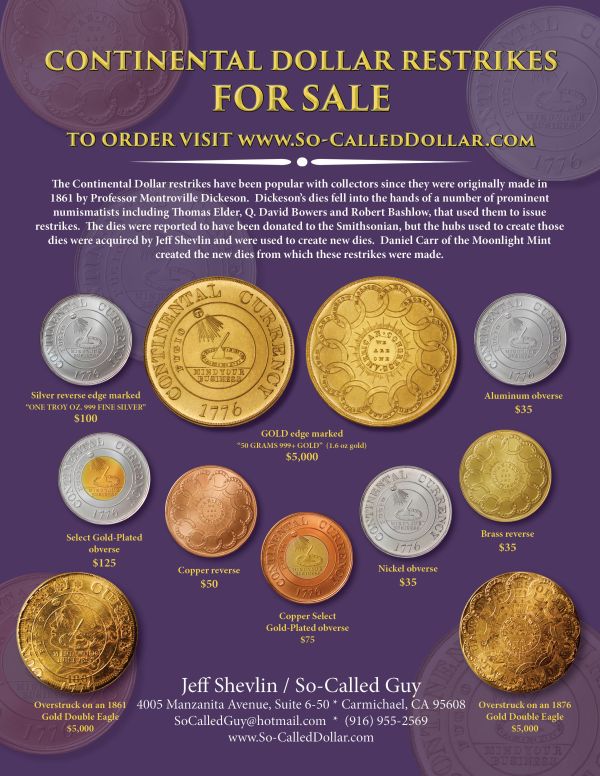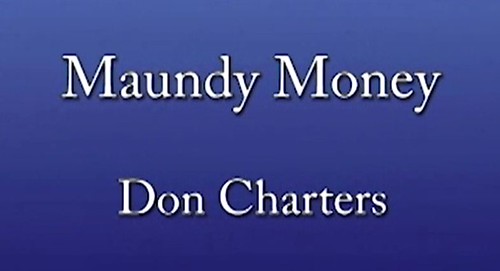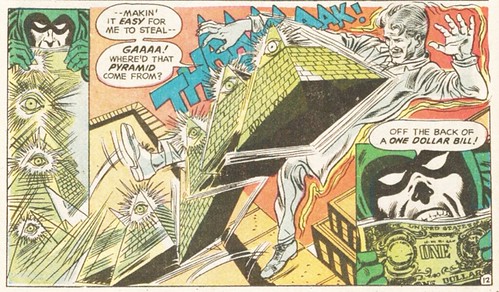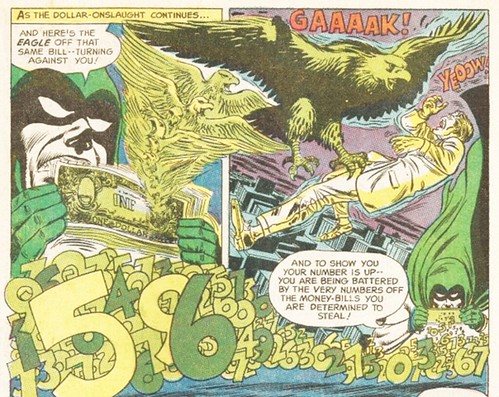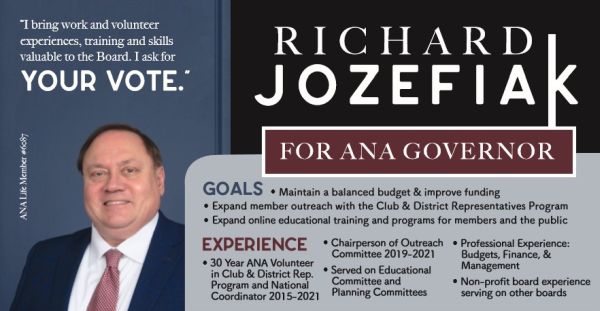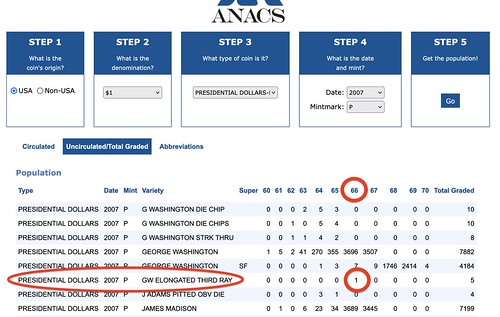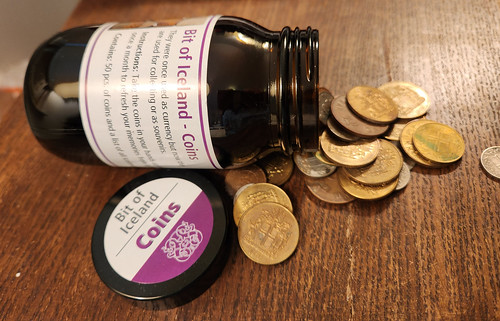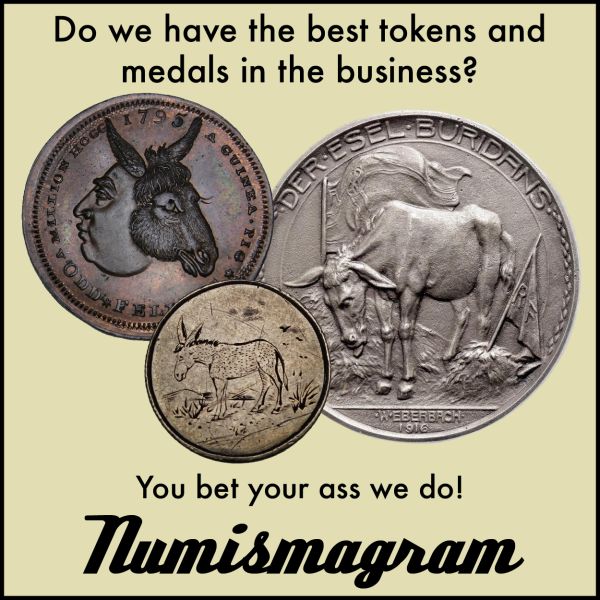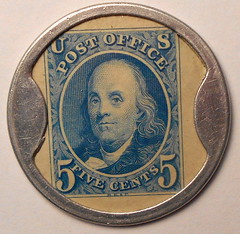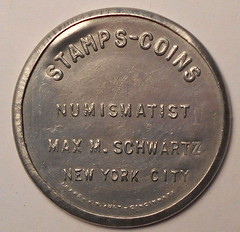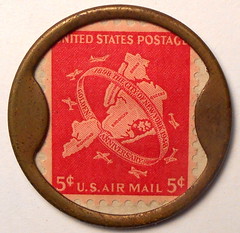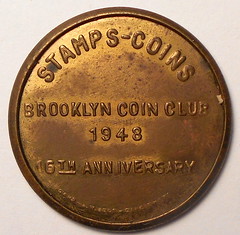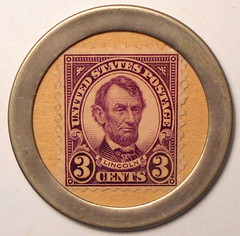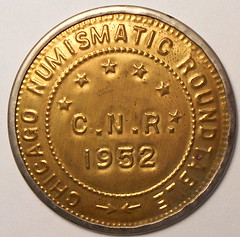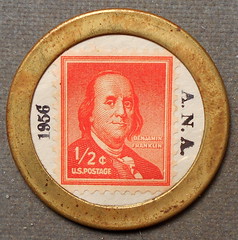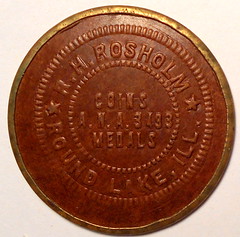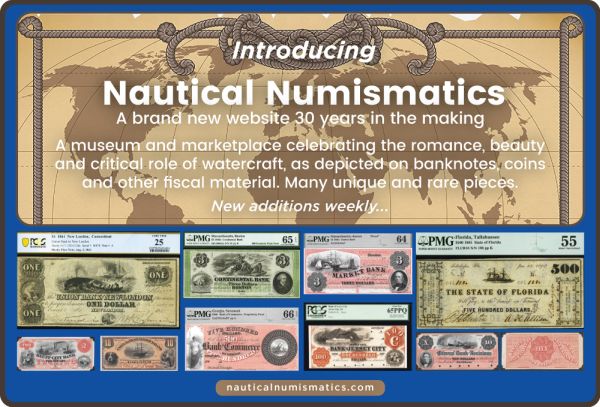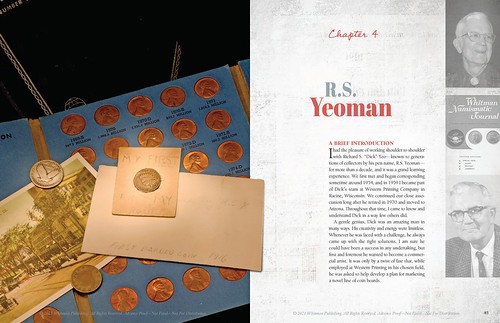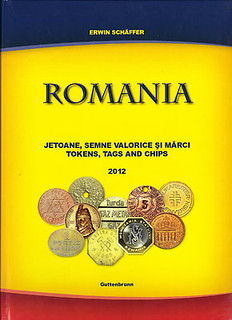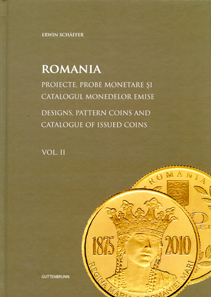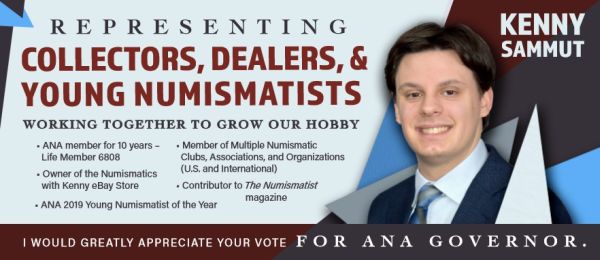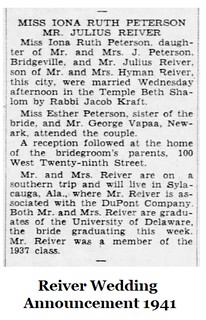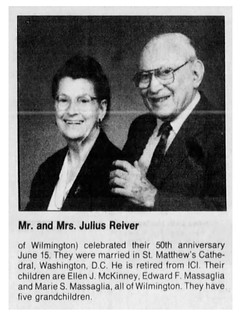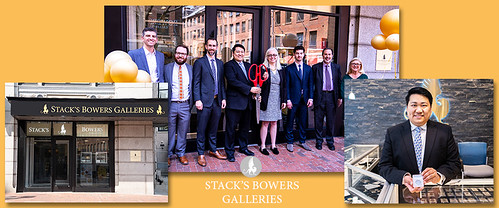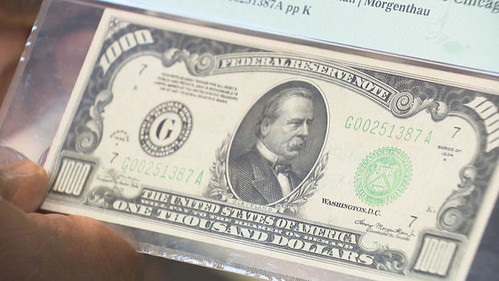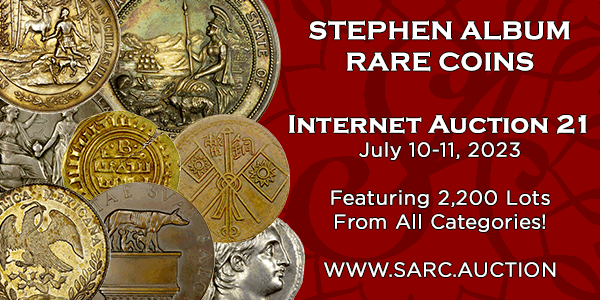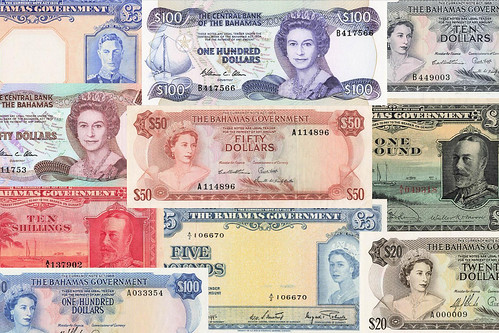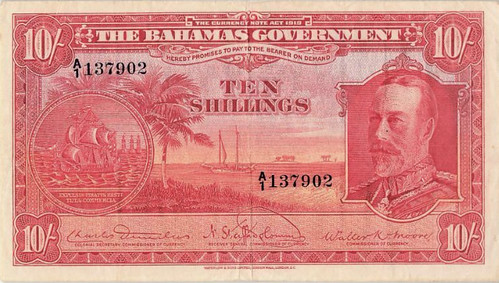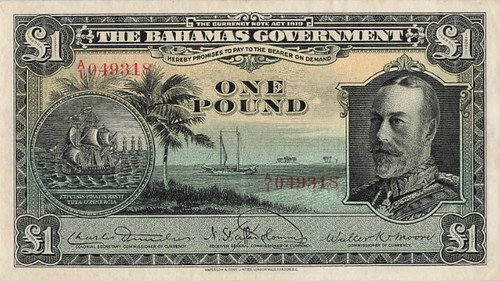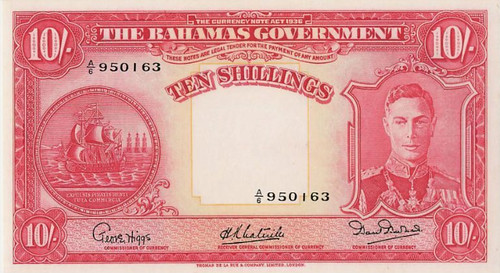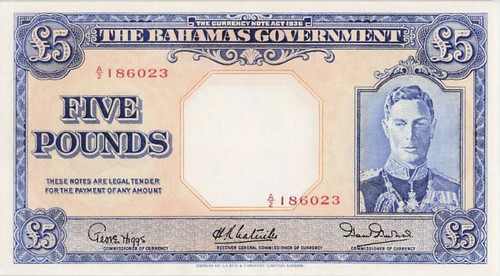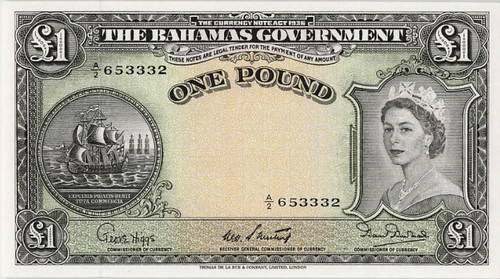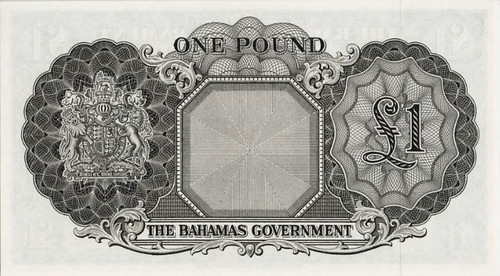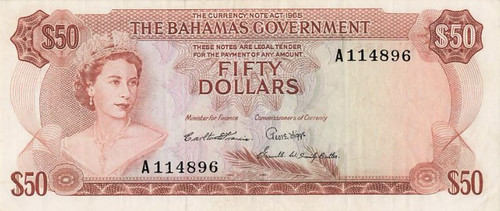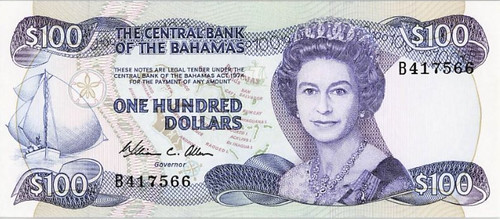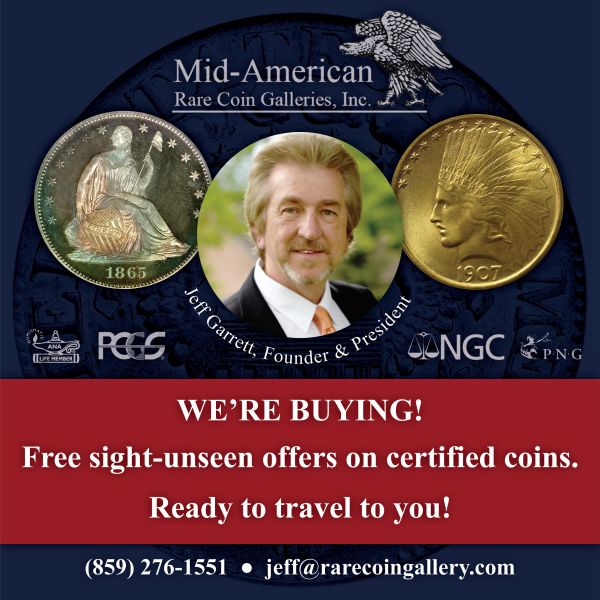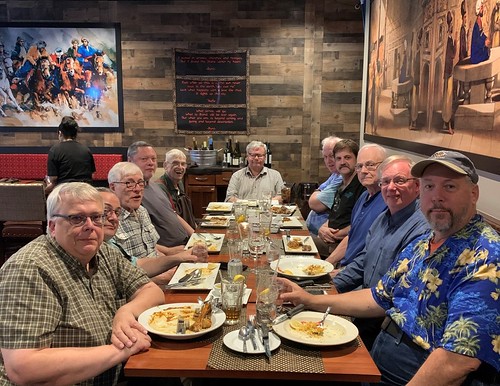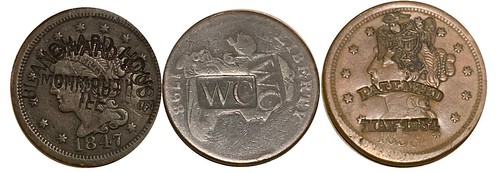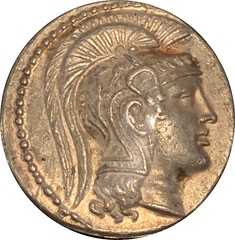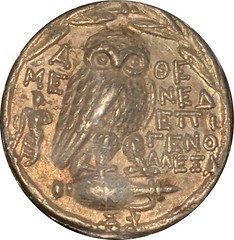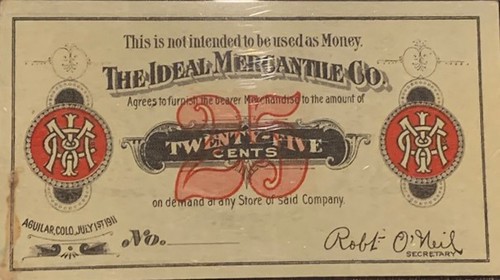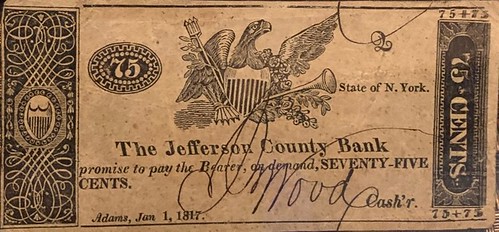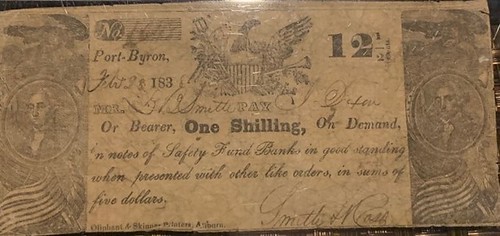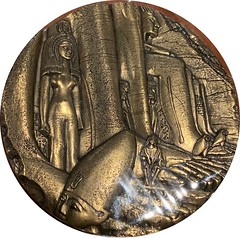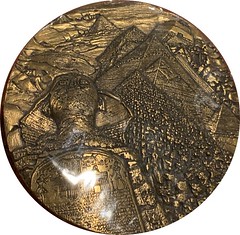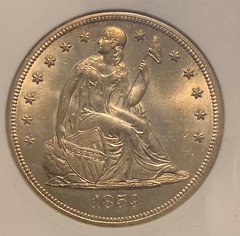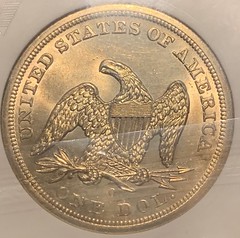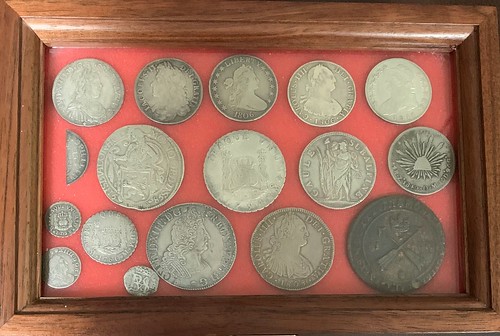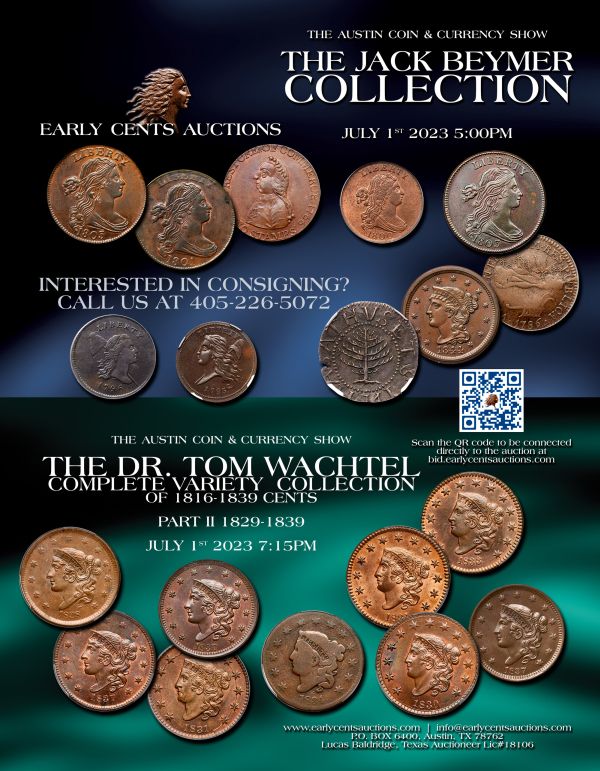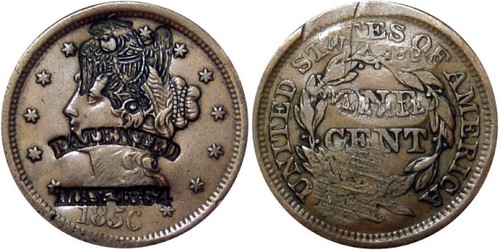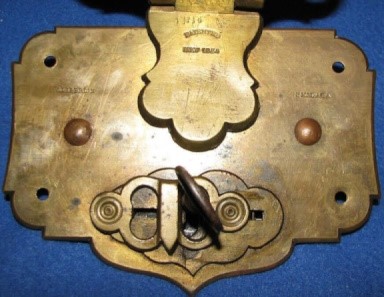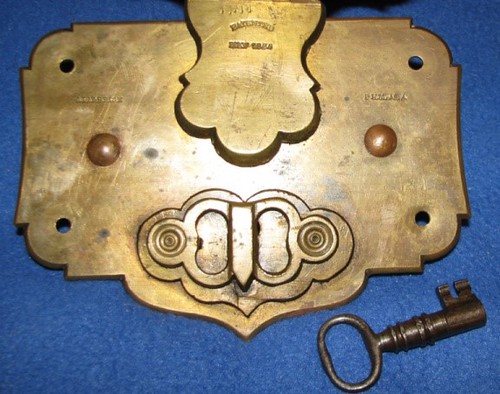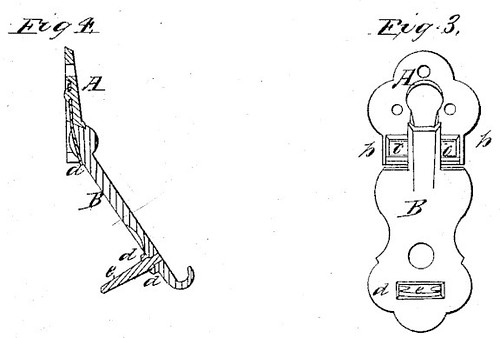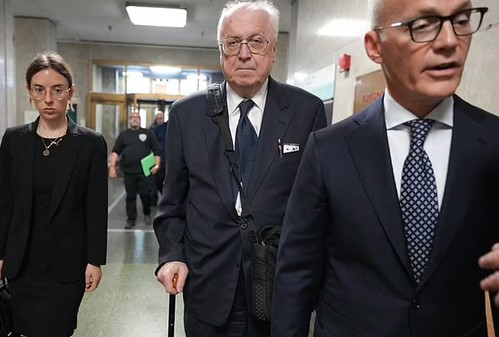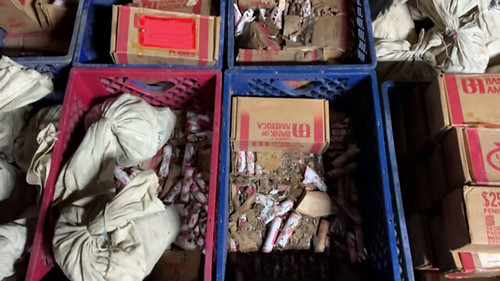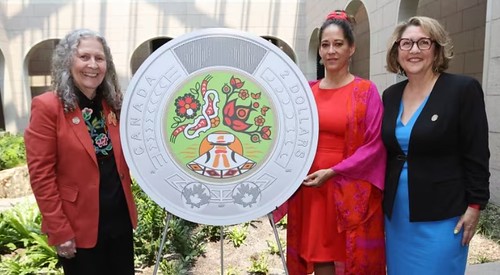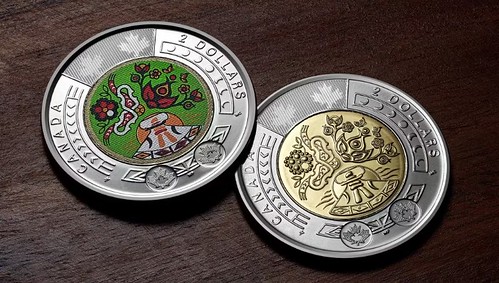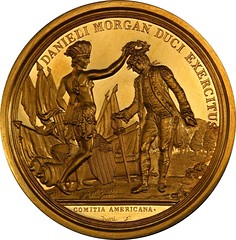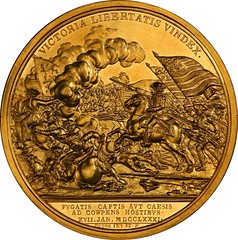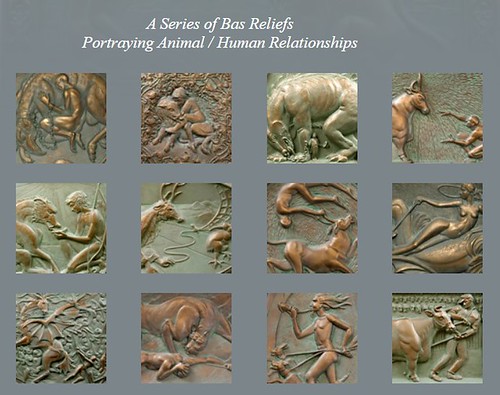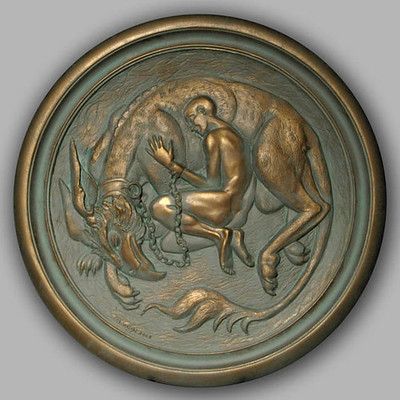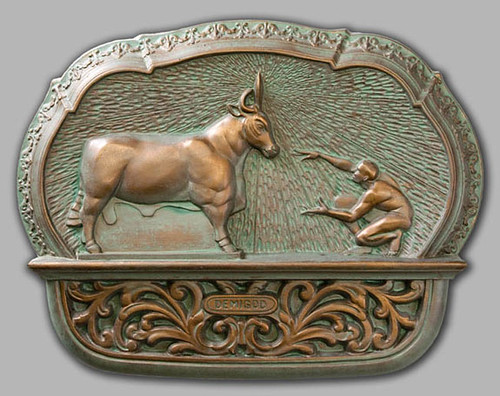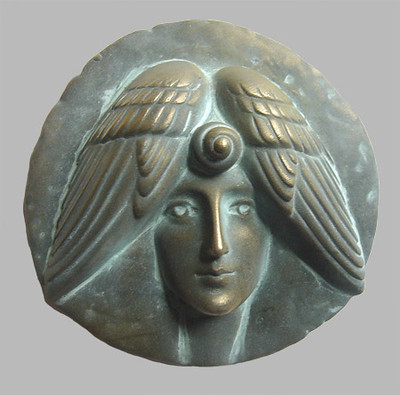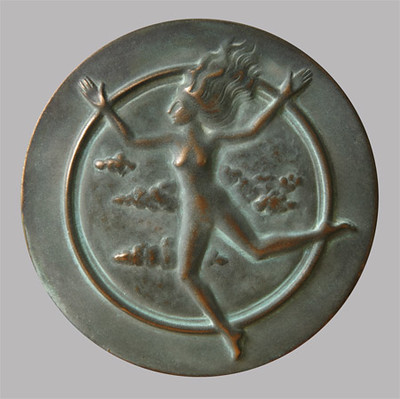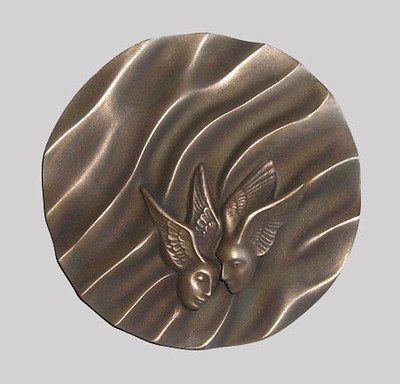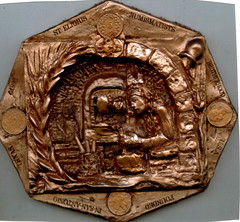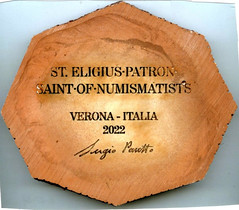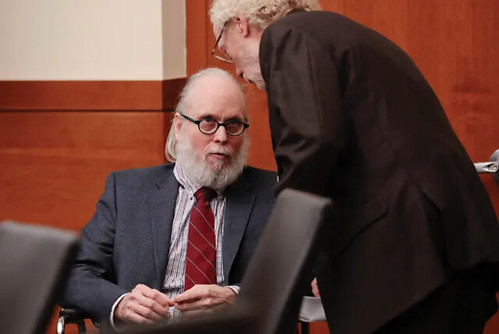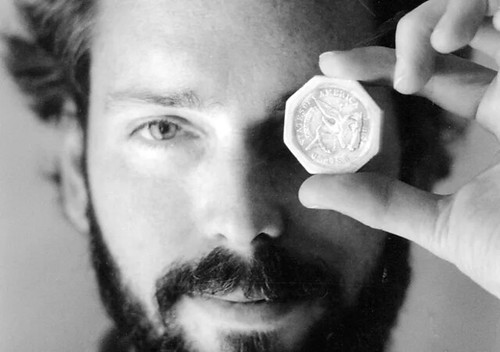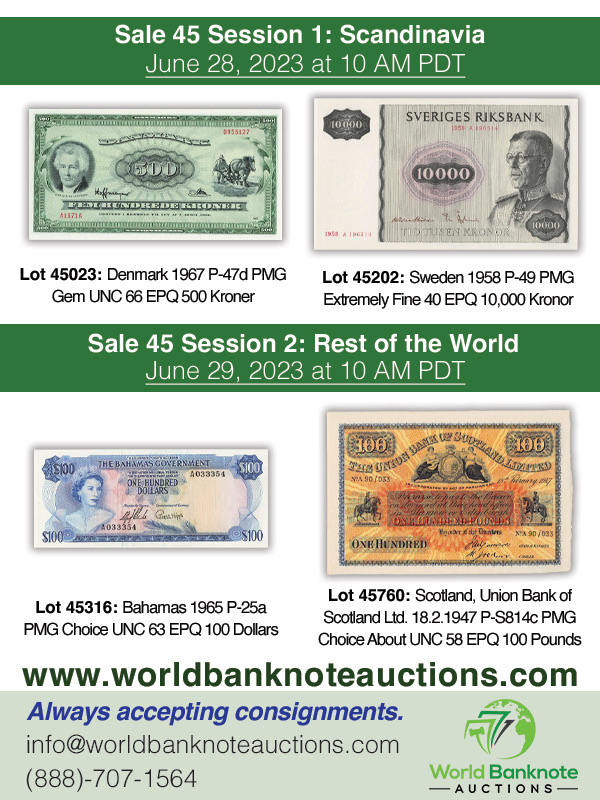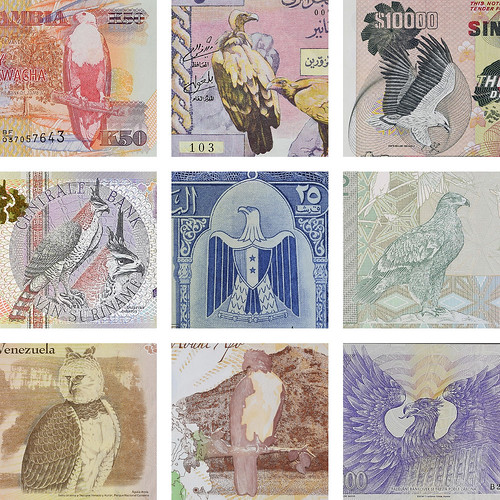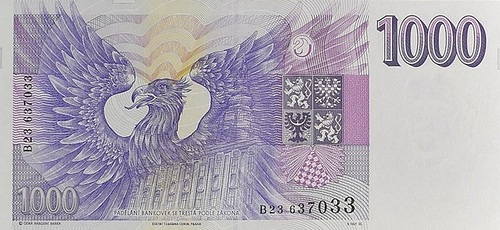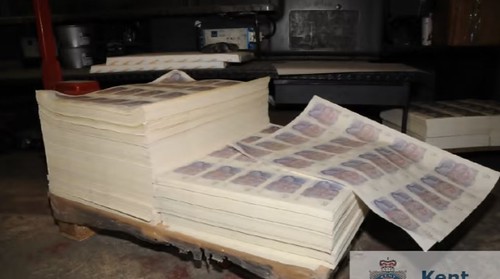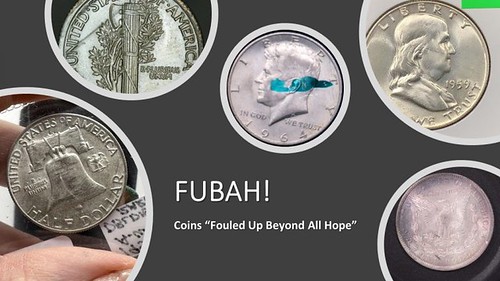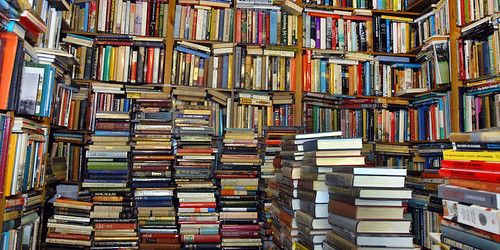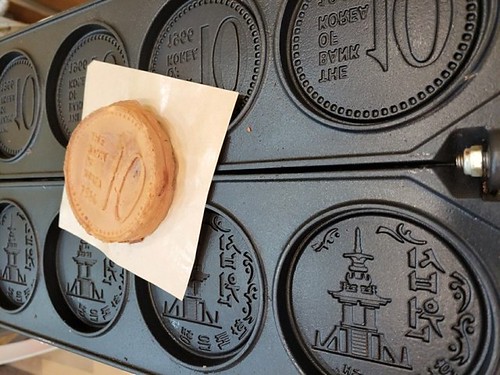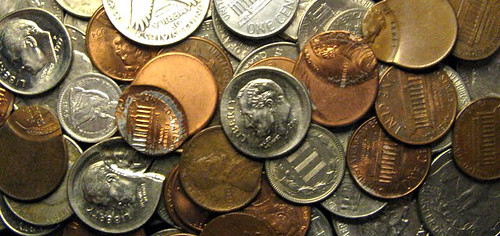
Visit our NBS Sponsors




About UsThe Numismatic Bibliomania Society is a non-profit association devoted to the study and enjoyment of numismatic literature. For more information please see our web site at coinbooks.org SubscriptionsThose wishing to become new E-Sylum subscribers (or wishing to Unsubscribe) can go to the following web page link MembershipThere is a membership application available on the web site Membership Application To join, print the application and return it with your check to the address printed on the application. Print/Digital membership is $40 to addresses in the U.S., and $60 elsewhere. A digital-only membership is available for $25. For those without web access, write to: Charles Heck, Treasurer AsylumFor Asylum mailing address changes and other membership questions, contact Chuck at this email address: treasurer@coinbooks.org SubmissionsTo submit items for publication in The E-Sylum, write to the Editor at this address: whomren@gmail.com BUY THE BOOK BEFORE THE COINSale Calendar |
- WAYNE'S WORDS: THE E-SYLUM JUNE 25, 2023
- NBS BOOKBINDING DEMO: CURVED NEEDLE
- WORKMAN'S BOOKS ANNOUNCES SIXTH BID SALE
- NEW BOOK: GUIDE BOOK BARBER SILVER COINS 3RD ED.
- JOURNAL OF EARLY AMERICAN NUMISMATICS V6N1
- U.S. COLONIAL CURRENCY GREENSHEET
- VIDEO: MAUNDY MONEY
- UNLEASHING THE POWER OF PAPER MONEY
- WOMEN COIN DEALERS PAST & PRESENT
- NOTES FROM E-SYLUM READERS: JUNE 25, 2023
- MODERN U.S. ENCASED POSTAGE STAMPS
- R.S. YEOMAN ON RUNNING A COIN SHOW
- PASSINGS: ERWIN SCHäFFER, LARRY CASEY
- VOCABULARY TERM: MULTIPLE STRIKING
- JULIUS
JULES
REIVER - STACK'S BOWERS BOSTON OFFICE HIGHLIGHTED
- WBNA OFFERS VARIK COLLECTION OF BAHAMAS
- TOM'S NUMISMATIC DIARY: JUNE 25, 2023
- STAR LOCK WORKS COUNTERSTAMPED LARGE CENT
- DEALER ITALO VECCHI ARRAIGNED IN NYC
- "MILLION PENNY HOARD" SOLD
- INDIGENOUS PEOPLES DAY TOONIE DESIGNERS
- GOLD MORGAN COMITIA AMERICANA MEDAL DISPLAY
- JEFFREY BRIGGS ANIMAL ALLEGORIES
- LINDLEY BRIGGS RELIEFS & MEDALLIONS
- NEW MEDAL OF NUMISMATICS PATRON ST. ELIGIUS
- TOMMY THOMPSON'S LEGAL LIMBO
- EAGLES ON WORLD BANKNOTES
- MEN PRINTED £12 MILLION FAKE BANKNOTES
- LOOSE CHANGE: JUNE 25, 2023
- KOREA'S COIN BREAD
- FEATURED WEBSITE: ERROR-REF.COM
Click here to read the thin version on the web
Click here to subscribe
Click here to access the complete archive
To comment or submit articles, reply to whomren@gmail.com
Content presented in The E-Sylum is not necessarily researched or independently fact-checked, and views expressed do not necessarily represent those of the Numismatic Bibliomania Society.
WAYNE'S WORDS: THE E-SYLUM JUNE 25, 2023
 New subscribers this week include:
Jonathan Baffi, courtesy Andy Singer; and
Dan Vial.
Welcome aboard!
New subscribers this week include:
Jonathan Baffi, courtesy Andy Singer; and
Dan Vial.
Welcome aboard!
Thank you for reading The E-Sylum. If you enjoy it, please send me the email addresses of friends you think may enjoy it as well and I'll send them a subscription. Contact me at whomren@gmail.com anytime regarding your subscription, or questions, comments or suggestions about our content.
This week we open with NBS news, a numismatic literature sale, a new book, two periodicals, Maundy money, and more.
Other topics this week include U.S. colonial currency, Barber coinage, modern U.S. encased postage stamps, Jules Reiver, R.S. Yeoman, banknotes of the Bahamas, medallic work of Jeffrey and Lindley Briggs, St. Eligius, Tommy Thompson, eagles on banknotes, and Korea's coin bread.
To learn more about bookbinding, Albion Cox, the Nova Eborac Coppers, Auctori Plebis tokens, backed colonial notes, more women coin dealers, Albert W. Ault, Multiple Striking, counterstamped coins, growing to the size of your own fishbowl, the Indigenous Peoples toonie, FUBAH coins, and that that "million penny hoard", read on. Have a great week, everyone!
Wayne Homren
Editor, The E-Sylum
NBS BOOKBINDING DEMO: CURVED NEEDLE
As noted last week, the Numismatic Bibliomania Society table at this summer's American Numismatic Association World's Fair of Money® will feature a special live bookbinding demonstration. -Editor
NBS Bookbinding Demo at ANA Convention
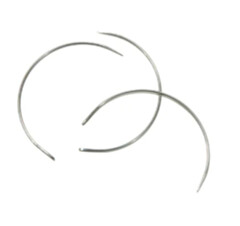 Our bookbinding word of the week is Curved Needle. A curved needle is useful for sewing thread behind signature knots, as depicted here. A straight needle requires that the entire needle be pulled behind the knot, a tight space at the spine. The curved needle makes this more navigable, as only a small part of the needle is behind the knot at any one time. We'll be set up at the NBS table on Wednesday, August 9, with all necessary supplies on hand.
Our bookbinding word of the week is Curved Needle. A curved needle is useful for sewing thread behind signature knots, as depicted here. A straight needle requires that the entire needle be pulled behind the knot, a tight space at the spine. The curved needle makes this more navigable, as only a small part of the needle is behind the knot at any one time. We'll be set up at the NBS table on Wednesday, August 9, with all necessary supplies on hand.
For more information on the Numismatic Bibliomania Society, see:
https://www.coinbooks.org/
To read the earlier E-Sylum article, see:
NBS BOOKBINDING DEMO AT THE ANA
(https://www.coinbooks.org/v26/esylum_v26n25a02.html)
WORKMAN'S BOOKS ANNOUNCES SIXTH BID SALE
Alan Workman has announced his latest numismatic literature sale, which will close on November 11, 2023. -Editor
Selections from A Latin American Numismatic Library and other Consignments: Sale 6, closing November 11, 2023 | Mark Your Calendars!
Workman's Books' sixth bid sale of rare and out-of-print books, auction catalogs, journals, and fixed price lists is currently being cataloged! The sale will close on Saturday, November 11, 2023 and will include many lots of rare and hard-to-find items on Latin American numismatics, ancient, U.S. and world numismatics, orders & decorations, militaria, shipwrecks, sunken treasure, lost treasure, treasure hunting, lost mines, and treasure in the American West.
This bid sale is being held through the online venue iCollector, and all registrations, approvals, and bids will be handled there. For this bid sale the lots will be closing on a timed interval with extensions for any bids placed within 5 seconds of closing. If you already have an iCollector account, you still must "GET APPROVED" to bid for each sale by entering and confirming your information for this bid sale, like reviewing your shipping information and choosing your preferred way of payment.
Even though the sale is months away, now is the perfect time to get approved and register, as any registration issues can certainly be accommodated more easily in advance. Registration is always FREE (no extra fees or percentages for bidding online). Once you are registered and approved, you will receive notices by email closer to the date of the sale once the lots are uploaded and ready for bidding.
For more information, watch this space:
Selections from A Latin American Numismatic Library and other Consignments Sale 6
(https://www.icollector.com/Selections-from-A-Latin-American-Numismatic-Library-and-other-Consignments-Sale-6_a61457)
To sign up for email announcements, see:
Workman's Books Mailing List
(https://tinyurl.com/c4w5ax6n)
NEW BOOK: GUIDE BOOK BARBER SILVER COINS 3RD ED.
Whitman will soon release a new edition of the Guide Book of Barber Silver Coins. -Editor
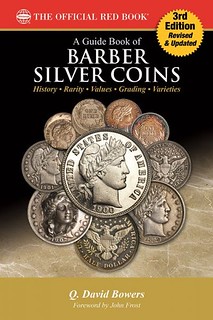 Whitman Publishing will release the updated third edition of the Guide Book of Barber Silver Coins, by Q. David Bowers, in August 2023. The 400-page book is volume 20 in the popular Bowers Series of numismatic references. It will debut at the American Numismatic Association World's Fair of Money in Pittsburgh, August 8–12. After the show, the new book will be available from booksellers and hobby shops nationwide, and online (including at www.Whitman.com).
Whitman Publishing will release the updated third edition of the Guide Book of Barber Silver Coins, by Q. David Bowers, in August 2023. The 400-page book is volume 20 in the popular Bowers Series of numismatic references. It will debut at the American Numismatic Association World's Fair of Money in Pittsburgh, August 8–12. After the show, the new book will be available from booksellers and hobby shops nationwide, and online (including at www.Whitman.com).
The subject of the book is the silver coinage—dimes, quarters, and half dollars—designed by U.S. Mint chief engraver Charles E. Barber and minted from 1892 to 1916. These were workhorse
coins of American commerce. They circulated for decades, and could be found in pocket change into the 1950s. Today Barber's silver coins are among the most popular classic U.S. series, with many enthusiastic collectors. The Barber Coin Collectors Society (BCCS, online at www.barbercoins.org) is one of the hobby's most active and fastest-growing specialty groups.
Updates in the third edition include a grade-by-grade comparison of historical and current market values for every Barber silver coin; new historical photographs; Barber coin love tokens; research on the 1894-S dime; and more. BCCS president John Frost and other members of the Society reviewed the second edition and contributed new research on die varieties, estimated field populations, and other areas.
In the Guide Book of Barber Silver Coins Q. David Bowers shares insightful study by date and mintmark for every issue of the three denominations (277 major varieties), in-depth historical background, and detailed data analysis. His text is illustrated by more than 800 photographs, engravings, and other images. Bowers—the Dean of American Numismatics
and the most prolific numismatic author of all time—tells collectors how to evaluate quality, determine value, understand the market, and make smart purchases to build significant collections. He takes the reader on a journey through the Barber coin years—what he calls the most interesting and evolutionary period in American history,
from the Gilded Age through the Progressive Era.
Bowers provides a wealth of information including mintages, illustrated grading standards, date-by-date estimates of the total number of pieces existing for circulated and Proof issues, values in up to 12 grades, and keys to collecting based on availability and sharpness of strike. Year-by-year historical background details the landscape of American life (and the state of the coin-collecting hobby) in the time of the coins' design and production.
The book includes A New Look at Charles Barber,
by John Frost, which publishes Barber family photographs and other archives recently revealed. This information corrects many popular misconceptions about Charles Barber, his personal life, and his relationships with George T. Morgan and President Theodore Roosevelt. Bowers also explores the mints, Mint directors, and Mint superintendents responsible for Barber coinage; and off-center Barber coins and other rare and valuable errors. Professional numismatist Jeff Ambio contributed an illustrated history of The Real Story of the 1894-S Barber dime,
a legendary rarity, of which only 24 were minted. And medallic-arts historian Dick Johnson shared a richly detailed five-page catalog of United States medals and related work by Charles Barber, including Assay Commission medals, Indian Peace medals, Presidential medals, military medals, and many others.
Kenneth Bressett, Editor Emeritus of the Guide Book of United States Coins, calls the book a landmark account touching on every aspect of Charles Barber's fascinating coins.
A Guide Book of Barber Silver Coins, 3rd edition
By Q. David Bowers; foreword by John Frost.
ISBN 0794849156 · 6 x 9 inches, softcover, 400 pages, full color · Retail $29.95 U.S.
To read the complete article, see:
New third edition of Q. David Bowers's Guide Book of Barber Silver Coinage will debut at the 2023 ANA World's Fair of Money
(https://news.coinupdate.com/new-third-edition-of-q-david-bowerss-guide-book-of-barber-silver-coinage-will-debut-at-the-2023-ana-worlds-fair-of-money/)
JOURNAL OF EARLY AMERICAN NUMISMATICS V6N1
The latest issue of the Journal of Early American Numismatics (JEAN) has been published. Editor Chris McDowell shared this summary. Thanks. -Editor
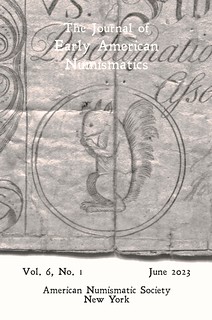 Make your favorite beverage, sit in your reclining chair, and indulge in JEAN's semi-annual
serving of numismatic catnip. This issue is brimming with excellent articles, making it difficult
to pick a favorite—they each have attributes that set them apart. However, in this issue, there is
one article that I unabashedly favor,
Make your favorite beverage, sit in your reclining chair, and indulge in JEAN's semi-annual
serving of numismatic catnip. This issue is brimming with excellent articles, making it difficult
to pick a favorite—they each have attributes that set them apart. However, in this issue, there is
one article that I unabashedly favor, The Life and Character of Albion Cox,
by Gary Trudgen.
While I may have missed one of Gary's past articles, it is safe to say that I have read nearly
everything he has written on colonial numismatics. The Cox article is, in my opinion, the best
monograph he has ever produced. Indeed, it is one of the top ten numismatic articles I have read.
I placed it first in this issue so it is easy to locate. If you don't read anything else, read Gary's
article on Albion Cox, a skilled assayer intimately involved in minting New Jersey coppers and
integral to the production of America's first specie coins at Ye Olde Mint.
Gary has two articles in this issue. His second offering, ‘Honest Industry' and the Nova Eborac
Coppers,
is much shorter but should not be overlooked—good things come in small packages.
Gary has uncovered compelling contemporary documentation relating to John Bailey's workshop
in New York City. I have run out of superlatives for Gary and the corpus of his lifetime of work
on colonial numismatics. I highly recommend both of Gary's articles.
The third article in this issue is exceptional, as well as being particularly timely. A general rule of numismatics is that as the price of coins and medals increases, many people begin to explore other areas for intriguing numismatic bargains. This truism has remained constant throughout my collecting lifetime. My good friend Bruce Smith showed me his collection of sewn, pinned, and backed colonial notes a half-dozen years ago. Ye Editor was fascinated. At first glance, they were unimpressive—appearing to be something more akin to an assemblage of damaged notes than a sophisticated collection—but upon closer examination their pragmatic handiwork and diversity of backings draws you to a world where good old-fashioned Yankee know-how and pragmatism extended the longevity of notes through every means possible.
I was particularly drawn to the backed specimens. Each backed note is a historical time capsule waiting to be opened. While I was able to dodge the siren song of these numismatic treats and keep from crashing on the rocks of another series, I began helping Bruce by notifying him when I saw them on eBay. Initially, they sold for prices reflective of their first blush appearance as torn and damaged notes, which they technically are. But soon enough, savvy collectors began to take note of their inner beauty, and the prices started increasing, eventually overtaking the prices for undamaged notes. My good friend apparently got in on the ground floor of a trend. Timing is everything.
Recently, the Colonial Coin Collectors Club (C4) began having table discussions at our
convention in Baltimore, where colonial coins, medals, and notes are shared and studied (we call
the event a Happening
). Last year the topic of backed notes came up for discussion. I
discovered that more people than I expected were interested in the subject, and there was great
enthusiasm to include backed notes as part of our Happening. While we could not include backed
notes last year, it will be a Happening topic at C4's November 9-11, 2023 convention. Bruce
Smith is the table captain
for this topic. Anyone who is a member of C4 and wants to
participate in this first-ever backed notes Happening should watch C4's website to reserve a seat at the table—come and share your notes and learn from people with a similar interest. With all
that said, I am sure some of you are asking, What's a backed note?
The answer to that question
and why they are the new thing
in colonial numismatics is answered by Joseph Daragan and
Julia Casey in their superb article Scraps from Yankee Doodle's Wastebasket: A Look Back at
Colonial Currency.
I am sure this article will spark even more interest in these items.
JEAN's editors and contributors strive to embrace the essential Spanish colonial coinages into each of our issues. I am pleased that Philip Ellsworth has contributed an invaluable article on South American assayers for this issue. As my numismatic interest turns to medals produced in Central and South America, I have come to a greater appreciation of the importance and difficulties in researching these Spanish colonial coinage topics. Philip's article is essential for those interested in learning more about the New World's first mints.
Roger Moore has produced a delightfully offbeat and entirely refreshing article on alcohol in pre-federal America. Although the piece has a numismatic connection, it is designed for readers interested in the specifics and designs of the money in circulation in early America and also in the daily lives of those who minted and spent the coins we collect. Like it or not, our ancestors were heavy drinkers. The history of alcohol is the history of modern man. In eighteenth-century Europe, drinking water was a risky undertaking. One can only imagine the putrid stench that hung in the urban air emanating from open sewers draining directly into streets and waterways. America was different. It was an unspoiled wilderness of fresh flowing streams. Nonetheless, our forefathers only grudgingly drank water, and then only because they lacked a ready supply of the good stuff from Europe. The rise of alcohol consumption tracks closely with the rise of American cities, commerce, and industrialization. But it was not all wassail and toddy. The fact of the matter is that many of our Revolutionary ancestors spent much of their day in a state of slight to moderate inebriation. What impact did this have on the production of coins? Roger helps answer this question in this high-spirited article.
The last, but not least, of our feature articles, comes to us from our good friend Jeff Rock. This is the conclusion of his series on Auctori Plebis tokens. Jeff brings the topic to a close with a bang. JEAN exists to publish articles like this. Numerous numismatic themes are unsuitable for a book, too complex for a short C4 Newsletter article, and too long for placement in other numismatic periodicals. If it were not for JEAN, these articles would go unpublished, unexplored, and perish.
I am pleased to preserve Jeff's wisdom for posterity on these pages. Our readers love Jeff's writing style, and his many followers will not be disappointed with this piece, which corrects generations of errors and finally and conclusively resolves the mysteries behind these tokens. There is no doubt that Jeff's articles on the Auctori Plebis series shall be THE seminal work in this area for generations.
JEAN has published book reviews in the past, and we plan to make them a regular feature. This issue concludes with a review prepared by Dr. Jesse Kraft, a man of great discernment, outstanding taste, and trusted numismatic wisdom.
We are living in the Golden Age of colonial numismatic research and writing. Future generations will look back on us with envy and wonder. We have yet to reach the apex of what is possible.
Editor's Preface
The Life and Character of Albion Cox
Gary A. Trudgen
Honest Industry
and the Nova Eborac Coppers
Gary A. Trudgen
Scraps from Yankee Doodle's Wastebasket:
A Look Back at Colonial Currency
Joseph Daragan and Julia Casey
The First Spanish Colonial Assayers in South America
Philip C. Ellsworth
Alcohol in Pre-Federal America:
A Cause for Minting and Printing Errors?
Roger A. Moore
The Mysterious Auctori Plebis Tokens, Part Two:
The Evasion Coppers
Jeff Rock
Book Review
The Early Betts Medal Companion: Medals of America's
Discovery and Colonization (1492–1737)
(Christopher R. McDowell)
Jesse Kraft
To subscribe, see:
https://numismatics.org/store/jean/
U.S. COLONIAL CURRENCY GREENSHEET
A new price guide for U.S. Colonial Currency is now available from CDN Publishing, home of the Greysheet and Greensheet. -Editor
The U.S. Colonial Currency Greensheet
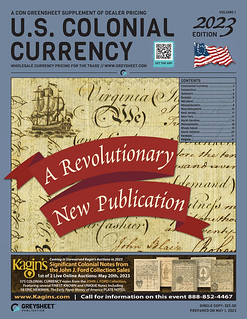 We're thrilled to offer a new product that is an absolute necessity for dealers, investors & serious collectors of U.S. bank notes. The collecting of United States Colonial paper money goes back more than 150 years and presents collectors with an extraordinarily diverse field to study and research. This genre covers all paper money issued by the 13 colonies and other state legislators, in addition to the Continental Congress.
We're thrilled to offer a new product that is an absolute necessity for dealers, investors & serious collectors of U.S. bank notes. The collecting of United States Colonial paper money goes back more than 150 years and presents collectors with an extraordinarily diverse field to study and research. This genre covers all paper money issued by the 13 colonies and other state legislators, in addition to the Continental Congress.
In the modern era, the interest and market for Colonial paper money has expanded significantly. The first modern, comprehensive reference work written by Eric P. Newman in the 1960's opened the field up to a much larger audience, who could now collect in a much more methodical way than ever before. Fast forward another 30 years and the advent of third-party currency grading made collecting these notes safer and more trustworthy.
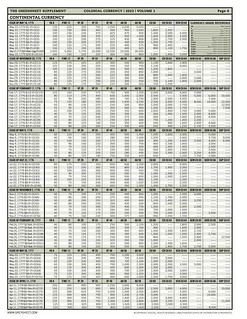 In step with the wider field of paper money, this increase in the collector base and demand has caused Colonial paper money to steadily increase in value. Prior to this Greensheet Colonial Supplement, there was no regularly updated price guide for these notes. Dealers and collectors can now access market relevant pricing data on our site, in our app, and in this print publication rather than relying on books that may have been published years ago.
In step with the wider field of paper money, this increase in the collector base and demand has caused Colonial paper money to steadily increase in value. Prior to this Greensheet Colonial Supplement, there was no regularly updated price guide for these notes. Dealers and collectors can now access market relevant pricing data on our site, in our app, and in this print publication rather than relying on books that may have been published years ago.
This supplement covers all officially issued notes from the Continental Congress, Connecticut, Delaware, Georgia, Maryland, Massachusetts, New Hampshire, New Jersey, New York, North Carolina, Pennsylvania, Rhode Island, South Carolina, Vermont and Virginia.
For more information, see:
U.S. Colonial Currency Greensheet
(https://www.greysheet.com/publications/greensheet-colonial)
VIDEO: MAUNDY MONEY
The David Lisot Video Library on the Newman Numismatic Portal can be found at:
https://nnp.wustl.edu/library/multimediadetail/522852
We highlight one of his videos each week in The E-Sylum. Here's one from 2007 with collector Don Charters talking about Maundy Money. -Editor
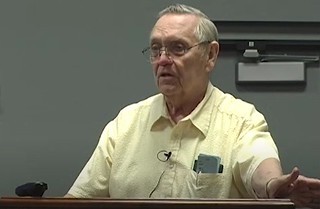 Michigan collector, Don Charters, is a recognized expert and lecturer on the coinage of Great Britain. He turns his attention to the popular and historic Maundy Money coinage. This program is a must for world coin enthusiasts and British collectors. This lecture with show-and-tell includes:
Michigan collector, Don Charters, is a recognized expert and lecturer on the coinage of Great Britain. He turns his attention to the popular and historic Maundy Money coinage. This program is a must for world coin enthusiasts and British collectors. This lecture with show-and-tell includes:
- how Maundy money evolved from the Christian tradition washing the feet and donating clothing
- creation of the first Maundy coins in 1660 specifically as money to be given to the poor
- the different denominations
- examples of different monarchs on Maundy coinage
Speaker(s): Don Charters.
To watch the complete video, see:
https://nnp.wustl.edu/library/book/560276
UNLEASHING THE POWER OF PAPER MONEY
Garrett Ziss submitted these notes on comic book numismatics, specifically Batman's Penny Plunderer and the Spectre's Dollar Bill Onslaught. Thanks! -Editor
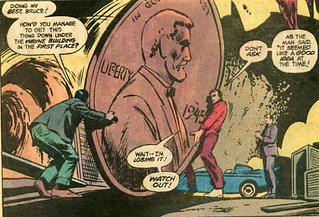 Regarding the question about the Penny Plunderer's backstory in the Batman series, his real name is Joe Coyne. He sells newspapers but is fired from his job for pitching pennies in the office. His lack of employment leads him to rob a cash register, but it only yields him pennies. Joe then decides to embrace this failure and lives a life of crime as the Penny Plunderer, focusing on illegal penny-themed capers. His first appearance is in World's Finest Volume 1 #30 (September 1947), where Batman resourcefully uses a giant cent to defeat the Penny Plunderer.
Regarding the question about the Penny Plunderer's backstory in the Batman series, his real name is Joe Coyne. He sells newspapers but is fired from his job for pitching pennies in the office. His lack of employment leads him to rob a cash register, but it only yields him pennies. Joe then decides to embrace this failure and lives a life of crime as the Penny Plunderer, focusing on illegal penny-themed capers. His first appearance is in World's Finest Volume 1 #30 (September 1947), where Batman resourcefully uses a giant cent to defeat the Penny Plunderer.
In another numismatic/comic book connection, paper money is prominently featured in issue No. 7 (December 1968) of a comic book called The Spectre. My father bought this specific issue when he was very young and recently handed it down to me because of its numismatic content.
As seen in the Batman series, The Spectre also uses a numismatic item to thwart evil doers and save the day. In this case, the numismatic weapon of choice is a one-dollar Federal Reserve note. When bank bandit Frankie Barron repeatedly tries to rob the Gateway City Bank, superhero Spectre brings the villain to justice by unleashing the power of paper money. The pyramid, eagle and numbers all leap off a $1 note to forcefully attack and subdue Frankie Barron.
These specific two comic book issues have starkly different monetary values. According to the 51st edition of the Overstreet Comic Book price guide, World's Finest Volume 1 #30 is valued at $1700 in near mint condition. Conversely, my issue No.7 of The Spectre, which is in well-loved condition, is worth about $12 (vs. $110 if it was near mint). However, what my issue of The Spectre provides that an issue of World's Finest Volume 1 #30 cannot, is a priceless family pedigree.
Very cool. Stories of the dollar's demise are undoubtedly premature. -Editor
To read the earlier E-Sylum article, see:
LOOSE CHANGE: JUNE 11, 2023 : Batman's Giant Penny
(https://www.coinbooks.org/v26/esylum_v26n24a30.html)
WOMEN COIN DEALERS PAST & PRESENT
Here are some additional reader contributions on women coin dealers. -Editor
Tom Caldwell writes:
"In regards to your article on women coin dealers past & present, I would think several others will get mentioned by other readers. One that comes to mind is Katie Duncan who is married to Danny Duncan from the northwest. Their company Pinnacle numismatics was in business for sometime up until recently. Katie recently semi retired & I believe is now dealing only with past clients or former contacts.
"Also Matt Deroma's a dealer from New Jersey that passed away a few years ago. His wife sets up at some area shows with remaining inventory of Matt's.
"There is another woman whom I don't really know her name, from the mid Atlantic area, that sets up in Baltimore against the wall on the right."
Bill Rosenblum writes:
"Sylvia Haffner in the 1960s and early 1970s was a specialist in Israeli coins and who wrote the best book ever on the subject around 1970 or 1971. She was from the San Diego area but later worked with NASCA whe Herb Melnick ran that company. Ironically she sold her collection to World-Wide Coins in Atlanta rather than NASCA. If I remember correctly she wanted to sell it outright rather than auction it. My Dad and I made an offer for the collection but were outbid by World-Wide. I then bought most of the collection after it was in a fire. Some rare Israeli and Palestine banknotes were very crisp.
"Also another woman coin dealer who also dealt in Israel (and other) coins was Aldona Davis who operated The Very Most Shop in Pittsburgh and before that in Chicago I believe. I bought my first big group of coins and notes from her when she was retiring in 1971 or 1972.
"I believe Frank Sternberg's daughter is Claudia.
"Francisca Bernheimer has run Gerhard Hirsch Nachfolger for many years.
"There was a woman in western Canada who sold world coins. Her name was Christina B------. I can't remember her last name but I think it was an eastern European name. I believe that Gorden Dickey who either worked for her or was her partner came to shows in the US. This was in the 1970s and perhaps the early 80s.
"Tom and Anna Sluszkiewicz of British Columbia ran (still run?) ATS notes a mostly mail order business. I used to see them in Chicago at the Chicago International Coin Fair."
Thanks, everyone. -Editor
To read the earlier E-Sylum article, see:
MORE WOMEN DEALERS
(https://www.coinbooks.org/v26/esylum_v26n25a15.html)
NOTES FROM E-SYLUM READERS: JUNE 25, 2023
Clip a Bright Guinea
David Powell writes:
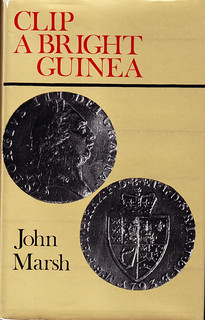 "Those who find the modern renderings of the David Hartley story too over-dramatized for their likings may wish to try and find a second-hand copy of John Marsh's Clip a Bright Guinea: The Yorkshire coiners of the eighteenth century {pub.1971}, which is much more down to earth. I have had a copy for many years, but unfortunately the online book websites seem to suggest that it has become quite rare.
"Those who find the modern renderings of the David Hartley story too over-dramatized for their likings may wish to try and find a second-hand copy of John Marsh's Clip a Bright Guinea: The Yorkshire coiners of the eighteenth century {pub.1971}, which is much more down to earth. I have had a copy for many years, but unfortunately the online book websites seem to suggest that it has become quite rare.
"I have had cause to visit the area on holiday several times and, whilst out walking, have seen both Hartley's tombstone in Heptonstall churchyard and the Cragg Vale buildings from across the valley."
I once had a copy of this book myself, but alas, I sold it off to recover shelfspace at one point. -Editor
To read the earlier E-Sylum article, see:
THE CRAGG VALE COINERS
(https://www.coinbooks.org/v26/esylum_v26n25a25.html)
Corrections: Mint Errors to Die For
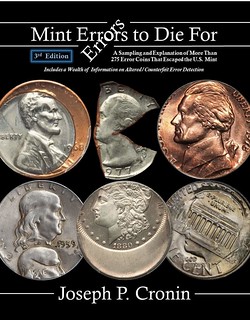
We have a couple minor corrections to last week's piece on the 3rd Edition of Mint Errors to Die For. -Editor
Author Joe Cronin writes:
"The 3rd edition is 266 pages. The book is $135 on eBay, but $110 if you buy direct and shipping is included within the 50 states. I can be reached at josephcronin@protonmail.com."
To read the earlier E-Sylum article, see:
NEW BOOK: MINT ERRORS TO DIE FOR, 3RD EDITION
(https://www.coinbooks.org/v26/esylum_v26n25a07.html)
2000-P Washington Dollar Elongated Ray Update
On a related topic,
Tom Koolick writes:
 "As you know, I've been laser focused on the 2000-P Washington Dollar Elongated Ray variety. Here's my dilemma: There's someone out there with the highest graded 2000-P Washington Dollar Elongated Ray (MS66) and I'd like to track them down. Not to purchase the coin, just to collaborate with them and find out how they acquired or found the coin. I even contacted ANACS, asking them to pass my e-mail address to the submitter of this coin. They were afraid of a conflict of interest, so they weren't able to help me.
"As you know, I've been laser focused on the 2000-P Washington Dollar Elongated Ray variety. Here's my dilemma: There's someone out there with the highest graded 2000-P Washington Dollar Elongated Ray (MS66) and I'd like to track them down. Not to purchase the coin, just to collaborate with them and find out how they acquired or found the coin. I even contacted ANACS, asking them to pass my e-mail address to the submitter of this coin. They were afraid of a conflict of interest, so they weren't able to help me.
"The person who found it, graded it or bought it, obviously knows what they're looking at. I'd like to get the word out that I'd like to talk to them. I can be reached at tjislander@yahoo.com ."
Do you own this piece, or know who does? Help Tom connect if you can. -Editor
To read the earlier E-Sylum articles, see:
2007-P WASHINGTON DOLLAR ELONGATED RAY
(https://www.coinbooks.org/v25/esylum_v25n14a25.html)
NOTES FROM E-SYLUM READERS: JUNE 26, 2022 : 2007-P Washington Dollar Ray Variety Certified
(https://www.coinbooks.org/v25/esylum_v25n26a09.html)
On Eating Banknotes
Former head of the Bureau of Engraving and Printing
Bob Leuver writes:
"Ha, ha! I knew banknotes printing was bad for your health, toxic chemical and hearing loss due to high decibels of the intaglio presses, but eating and digesting banknotes? That is a whole new dietary concept. What does one serve or drink with this dish?"
To read the earlier E-Sylum article, see:
POLICE OFFICER SWALLOWS BANKNOTES
(https://www.coinbooks.org/v26/esylum_v26n25a36.html)
How to Learn to Grade Coins
Alan V. Weinberg writes:
"It's been brought to my attention that disliking slabbing may be an acceptable opinion by old timers
in the hobby who feel confident in their examination and opinion of prospective purchases. But what about those collectors who are new to the hobby or have minimal years collecting?
"Good question. My answer would be do what the
old timers
did before slabbing. Educate yourself by attending shows, examining numerous items both raw and in slabs in both dealers' cases and in auction lot viewing. Ask questions. Read and view auction catalogues and read their narratives too. Today's major numismatic firms issue and post online auction catalogues much more informative than in
yesteryear
. Buy the published references issued in your chosen specialties, be it Morgan dollars or colonial coins.
"Gradually, you will become more expert in recognizing true rarity and grade. And really appreciating numismatics above and beyond
slab grade
and market value."
Amen, brother. -Editor
To read the earlier E-Sylum article, see:
NOTES FROM E-SYLUM READERS: JUNE 18, 2023 : On the Dislike of Slabbing
(https://www.coinbooks.org/v26/esylum_v26n25a16.html)
A Bit of Iceland - Coins
Steve Luftig writes:
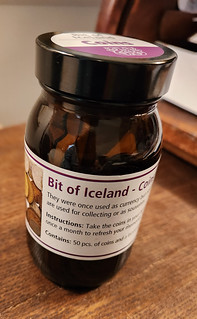 "Thank you for your terrific weekly compilation, so interesting to read each Monday.
"Thank you for your terrific weekly compilation, so interesting to read each Monday.
"I just returned from a vacation trip which included visits to two cities in beautiful Iceland, Akureyri and Reykjavik. In both cities the local refrigerator magnet souvenir shops also sold these jars of older Icelandic coins. The instructions read "Take the coins in your hands at least once a month to refresh your memories from Iceland". At an exchange rate of 150 Icelandic krona to the dollar, there's no better practical use for the old small denomination bronze coins, "eyrir"and "aurar" anymore. Even a few one krona coins are in the jar."
Interesting use for old coins! Thanks for sharing this. -Editor
George Heath Used Vulcan Salute
Ted Banning submitted this interesting observation from a 1903 issue of The Numismatist. -Editor
In checking my references for a book I'm trying to finish, I smiled when I came across the last line of this passage in The Numismatist vol 16, no 2 (February 1903), p 60:
Wikipedia tells me that the "live long and prosper" greeting associated with Star Trek's Spock originated in George du Maurier's (1894) novel, Trilby, and it appears that George Heath picked up the expression long before Theodore Sturgeon scripted it for Spock.
May we all live long and prosper! -Editor
Books on Eight Reales Sought
Brad Porter writes:
"I have been a subscriber for a few years. I am trying to build my collection of books on Spanish and South American 8 Reale coins. Can you suggest anyone I should contact regarding this, or a place I should look?"
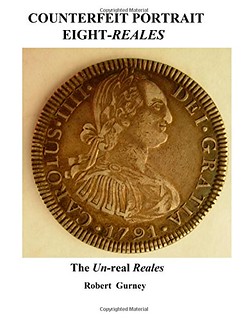
Can anyone help? This is outside my area of interest, but I know there are quite a number of titles in this area. Which are the best of the bunch for collectors today? Here's a title on the counterfeits. -Editor
To read the earlier E-Sylum article, see:
NEW BOOK: COUNTERFEIT PORTRAIT EIGHT-REALES
(https://www.coinbooks.org/esylum_v17n37a08.html)
MODERN U.S. ENCASED POSTAGE STAMPS
Dick Grinolds submitted these notes about modern U.S. encased postage stamps. Thank you. -Editor
I recently acquired the "modern" (1940's & 1950's) encased postage inventory and accumulation of the late Rockford, Illinois dealer Rich Hartzog. I'm aware of your soft spot for Civil War era encased postage so I thought this group of second generation U.S. encased postage might be of interest to others as well. Most of the encased of this era were made by two individuals, Albert W. Ault, a Cincinnati, Ohio coin & stamp dealer and R.H.Rosholt, a Round Lake, Illinois coin & medal collector.
Ault produced encased postage mostly for other coin dealers and collectors including Sol Kaplan of Cincinnati, Max Schwartz and Harvey Dolin of New York City, C.A. Brownell of Clearwater, Florida, A.N.A. President Nelson Thorson of Omaha and more. According to Max Schwartz, the price from Ault was $40 per 100 pieces which could be broken into groups of 25 with different stamps and/or metal frames. Ault often used 5c & Xc stamps cut from the 1947 CIPEX souvenir sheet.
Rosholt catered more to collectors and dealers in the greater Chicago area including B.E. Brown of Viroqua, Wisconsin, Ernest Jonas of Chicago as well as the Chicago Numismatic Roundtable and his own personal encased postage cards. His encased postage tended to be a larger 38mm size with embossed backs of various metals, paper, leather and other materials. An October 1977 TAMS Journal article by Donald Thrall gives more background and lists 17 issuer and metal varieties of modern encased postage known to him. The Hartzog group includes at least 45 different issuer, stamp & metal varieties plus patterns, trials, duplicates and a few dozen European metal and celluloid encased postage which I will be auctioning on eBay over the next several weeks under the user name celluloid.
Dick adds:
"I've never handled or seen a comparable group in 50 years & couldn't find any previous discussion in the archives. Here is the link to the TAMS article mentioned above:
https://archive.org/details/tamsjournal17n5toke/page/209/mode/1up
"
Good luck to bidders in the sales. This is a great opportunity for collectors of these items. -Editor
R.S. YEOMAN ON RUNNING A COIN SHOW
Dennis Tucker of Whitman Publishing passed along this excerpt from Ken Bressett's book about R.S. Yeoman, the Red Book founding editor. Thanks. -Editor
Profit of the Mind—R.S. Yeoman on How to Run a Good Coin Show
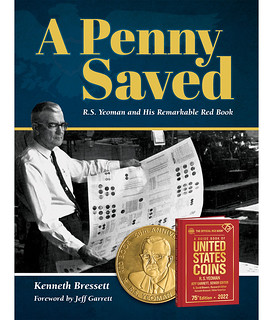 Kenneth Bressett's memoir A Penny Saved: R.S. Yeoman and His Remarkable Red Book
celebrates the life of his mentor, hobby legend Richard S. Yeo (known as R.S. Yeoman), and
the longevity of the Guide Book of United States Coins (the
Kenneth Bressett's memoir A Penny Saved: R.S. Yeoman and His Remarkable Red Book
celebrates the life of his mentor, hobby legend Richard S. Yeo (known as R.S. Yeoman), and
the longevity of the Guide Book of United States Coins (the Red Book
), first published in
1946. The 352-page hardcover volume is available from bookstores and hobby shops and
online (including at Whitman.com). This excerpt is from chapter 5, wherein Bressett shares
a number of Yeoman's writings. It was first published in the February–March 1964 issue of
the Whitman Coin Supply Merchandiser. Yeoman talks about the importance of coin shows,
the camaraderie they foster, and how to balance their objectives. He put these thoughts on
paper 60 years ago—but they could have been written with equal wisdom today.
Whatever observation we make about the trend of coin collecting, the desire to assemble in large groups is clearly the most evident. Any week of the year, with a few obvious exceptions, there are one to ten coin shows in as many communities throughout the United States and Canada. It is a good trend, and those of us who supply the necessary accessories for arranging, protecting, and pricing coins, should encourage this kind of togetherness to the utmost.
The primary objective of the convention has been and probably will continue to be the selling and buying of coins. These gatherings are basically bourses, and most dealers derive an added benefit from making contacts with new and old customers. The sale of a coin folder or Blue Book to a novice collector is often the start of a long-term dealer-client association.
The future of the coin show or convention, however, rests on more than the bourse, and it is encouraging to see how some local club sponsors are keeping a happy balance between the dealer's bourse, the auction, and the educational features. The show chairman is on the right track when he emphasizes exhibits and announces well in advance that handsome trophies or plaques will go to the winners. He knows that newcomers to the numismatic ranks are quickly brought into the show when the local newspaper, radio, and TV announces a free exhibit of rare coins.
We have noticed that the best attendance comes to those coin shows that have a modest or free registration, accessible display room, cordial committee members to answer questions, and a place to rest when the feet start to tire. One feature in particular has been offered by only a few conventions, and that is a special educational forum. Sometimes a panel of two to four well-informed individuals can do more to further the hobby than all the coin investment plans ever devised. There ought to be more of this kind of thing.
Our hobby can be torn apart very thoroughly if the profit motive continues to be over-emphasized to the exclusion of educational features. Competitive displays, authoritative lectures, mind-stimulating forums, and displays of available numismatic literature are convention attractions that can strengthen and perpetuate the ranks of the coin collecting fraternity.
Let us have both school and marketplace, but in the right proportion. Perhaps we can plan our conventions this year with more emphasis on profit of the mind.
Yep - solid advice. -Editor
A Penny Saved: R.S. Yeoman and His Remarkable Red Book
By Kenneth Bressett; foreword by Jeff Garrett.
ISBN 0794849016. Hardcover, 8.5 x 11 inches, 352 pages, full color.
Retail $39.95 U.S.
https://whitman.com/a-penny-saved-r-s-yeoman-and-his-remarkable-red-book/
To read earlier E-Sylum articles, see:
NEW BOOK: A PENNY SAVED
(https://www.coinbooks.org/v24/esylum_v24n16a02.html)
R.S. YEOMAN AND HIS REMARKABLE RED BOOK
(https://www.coinbooks.org/v24/esylum_v24n18a07.html)
PASSINGS: ERWIN SCHäFFER, LARRY CASEY
Readers reported the passing of two fellow numismatists this week. Sorry to hear the news. -Editor
Erwin Schäffer, 1937-2022
Yosef Sa'ar writes:
"Sadly, I must report the death of the numismatic author and researcher Erwin Schäffer of Bretzfeld, Germany. Herr Schäffer wrote several catalogs of the tokens of Romania, the standard works on the subject. He died on 8 July 2022, four days short of his 83rd birthday.
"I see the E-Sylum also reviewed his book on Romanian pattern coins.
"Erwin Schäffer, Romania - Designs, Pattern Coins and Catalogue of Issued Coins. Vol II. Guttenbrunn 2015. 480 p., color illustrations throughout. Hardcover. Thread stitching. 21 x 30 cm. ISBN 978-973-0-19455-5. 65 euros."
To read the complete online obituary (in German), see:
ERWIN SCHAEFFER
(https://www.trauerundgedenken.de/traueranzeige/erwin-schaeffer)
Lawrence "Larry" Richard Casey
Judy Blackman passed along news of the passing of New Jersey numismatist Larry Casey.
Here's a short excerpt from his obituary. -Editor
 Larry was a memorable character. You could recognize him by his unique way of speaking, extensive vocabulary, and quirky sense of humor. He forged lifelong friendships with some but shared equally deep bonds with others he had known for far fewer years. Having heard of his exploits, even people who never met him felt as if they knew him.
Larry was a memorable character. You could recognize him by his unique way of speaking, extensive vocabulary, and quirky sense of humor. He forged lifelong friendships with some but shared equally deep bonds with others he had known for far fewer years. Having heard of his exploits, even people who never met him felt as if they knew him.
Larry was an avid numismatist and collected Castro-era Cuban banknotes. He enjoyed sharing his albums and expertise and had hoped to write a catalogue one day.
To read the complete online obituary, see:
Lawrence "Larry" Richard Casey | 2023 | Obituary
(https://www.therossifuneralhome.com/obituary/lawrence-larry-casey)
To read the earlier E-Sylum articles, see:
NEW BOOK: ROMANIA TOKENS, TAGS AND CHIPS
(https://www.coinbooks.org/esylum_v17n02a06.html)
BOOK REVIEW: ROMANIA TOKENS, TAGS AND CHIPS
(https://www.coinbooks.org/esylum_v17n04a04.html)
NEW BOOK: ROMANIAN COINS (1989 TO 2014)
(https://www.coinbooks.org/esylum_v19n02a06.html)
VOCABULARY TERM: MULTIPLE STRIKING
Here's another entry from Dick Johnson's Encyclopedia of Coin and Medal Terminology. Unfortunately, the planned photographs were not added to the manuscript. -Editor
Multiple Striking. Using more than one blow to form a piece by striking in a press. Some coin relief items – coins or medals – are intentionally double struck, struck twice in a coining press engineered to perform a double blow. This is done without disturbing the blank so the register is perfect for the second blow. Should the blank be twisted between the first and second blow it will exhibit both images and will be called double struck image. Proof surface items are often double struck on these special coining presses to effect a better strike, to impart a sharper image, with full angle edges at the rim/edge junction, and, of course, the highly reflective proof surface.
Art medals, on the other hand, are always required to have as many blows as necessary to bring up the relief intended by the artist; such multiple striking alternates with annealing (softening) of the struck blanks to relieve the work hardened metal. After each blow the partially struck up pieces are removed from the press, heat treated in a separate department, and returned to the pressroom to be placed back another time in the press for a subsequent blow; placing the partially struck blanks in the press is critical, the register must be perfect, or again a double struck image will appear.
The physical characteristics of most metal alloys used for coins and medals are such that any metalworking process, particularly striking, causes stress in the metal and the piece becomes work hardened – the molecules arrange themselves in such a way that further work will not easily alter their configuration. The piece must be annealed – by heating and rapid cooling – to soften the metal and allow the molecules to flow easily again; this is particularly true of bronze and silver, the most popular composition for coins and medals. Thus art medals are struck a number of times necessary to fill every cavity in the die to be fully struck up. See heat treating, work hardened.
Here is an instance where the same term has two meanings in numismatics, in this case whether it is a coin or a medal. They are given separate entries in this Encyclopedia and so numbered. Also to further explain this the process -- Multiple Striking – is listed above.
Multiple Strike. (1) The intended multiple striking, as a high relief medal, to bring up the full design relief intended by the artist. This obviously is done only in a medal press and can occur from two to twenty or more times. See multiple striking, process set.
CLASS 06.5
4840-(000)06.9
This mis-struck cent was struck three times before being ejected. The coin's outer edge began to wrap around the edge of the die forming the raised edge. the final strike was off center and it started to wrap the die. Photo: Fred Weinberg.
Multiple Strike. (2) A mis-struck piece intended to be struck only once, but which has come between the dies two or more times by mechanical accident or human caprice. See DOUBLE STRIKING, MIS-STRUCK.
CLASS 06.9
4990-(003)04.6
To read the complete entry on the Newman Numismatic Portal, see:
Multiple Striking
(https://nnp.wustl.edu/library/dictionarydetail/516375)
JULIUS JULES
REIVER
E-Sylum Feature Writer and American Numismatic Biographies author Pete Smith submitted this article on collector Jules Reiver. Thanks! -Editor
This week is the second installment of numismatists portrayed in movies. Jules Reiver's exploits during the Battle of the Bulge were grossly exaggerated in the movie, but he was a legitimate American hero.
JulesReiver
Julius Reiver got his name in the newspaper during his service in World War II. He came to the
attention of combat reporter Ernie Pyle who reported several times on Reiver's exploits. Pyle
devoted a chapter in his book Brave Men to antiaircraft batteries and to Reiver's Retrievers.
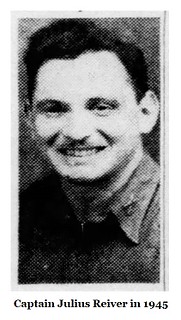 During the Normandy invasion, Captain Reiver was in command of Battery
During the Normandy invasion, Captain Reiver was in command of Battery D
, 110th
Antiaircraft Artillery Gun Battalion. As reported in the Wilmington Morning News on August 25,
1944, Reiver told his story of the Normandy landing in a letter.
We've really been lucky. We were supposed to be the first
heavy anti-aircraft ashore in D-Day,
but nothing left our beach so we couldn't land. That night we were bombed as we lay offshore
taking on wounded. The bombs just missed, and the ship jumped a foot or two in the air. We
decided that since it was damned near impossible to dig fox holes in the steel deck, we would be
ashore the next day if we had to swim.
We didn't know it then, but we were the only battery to get ashore and set up. and on D plus one night, we were the only AA protection against high flying planes. We got two that first night – the first crashed in flames and was the first plane shot down by AA guns in France. All in all, we've been very lucky. I just hope it keeps up. Reiver received a certificate of merit for action on the second day of the invasion.
Ernie Pyle spent two days and two nights with the unit and bunked with Reiver. The first night
there was little action but the second night they had greater success, guided by radar and firing at
planes they could not see. Reiver commented, The last night Pyle was with us, our men put on a
real good show. They shot down seven planes.
Reiver said of Pyle, He was such a nice little
guy. None of us had heard of him before but inside of a couple of hours he was one of us. The
fellows really got to liking him.
The Morning News related another letter written to his wife. He said that his unit came into one
town which had been deserted by the Germans and previously bypassed by the Americans, so
that his men were the first Americans to appear there. The French townspeople gave them a great
welcome, brought their babies out to be kissed by the G.I.'s, showered them with flowers, and
brought them gifts of wine. The captain pressed one of the flowers and sent it to his wife. He also
sent some French coins and paper money and some of the invasion money used by the
Americans.
In December of 1944, the Germans launched a counteroffensive now known as the Battle of the Bulge. They broke through American lines and pushed west against little resistance. The Germans knew they did not have enough fuel to complete their assault but counted on capturing fuel from the Americans. An advance German column pushed north out of La Glieze toward the First Army headquarters at Spa.
The Americans had a fuel depot with 2.5 million gallons of gasoline in five-gallon Jerry cans. Reiver's battery was split into two groups and pressed into service to protect the fuel and delay the German advance until reinforcements could be brought up.
As Reiver was moving into position, one of the guns was mired in the mud and the tractor attempting to pull it out also got stuck. Time and effort were spent getting the gun free and the tractors pulling revved up their engines and made a terrible noise.
Reiver commented on their mistakes and how that may have been an advantage. The Germans hearing the noise may have assumed it was a much larger and more threatening tank force.
His story was told in The News Journal of April 28, 1945.
Monday morning, they came and Dog Battery saw its first infantry and anti-tank action. We
fired at them and they fired at us for about 10 to 15 minutes; then they turned their column and
ran away.
They got to within 75 yards of the gasoline dump, but not a drop of that gas did they get. A cannon shell killed one GI, but all of our men were okeh. We're really lucky. Reiver received a bronze star for the battle.
The story was told in the 1965 movie, The Battle of the Bulge. Some reports suggest that Reiver was portrayed by Henry Fonda. This isn't quite correct.
The November 17, 2002, issue of The E-Sylum had this report. …after the war, the role of
Lieutenant Colonel Daniel Kiley
, which was modeled after Reiver, was played by Henry
Fonda in the 1965 film, Battle of the Bulge.
The Hollywood version bore only a slight
resemblance to reality, but That's Entertainment.
The article further stated, First, understand that when aimed horizontally, anti-aircraft guns
make dandy anti-tank guns.
Other reports state that the guns were on a hill and the barrels
would not depress beyond horizontal and were useless in the fight.
Getting your name and address in the paper can have a downside. While he was deployed, someone broke in to burglarize and ransack his house on December 12, 1944.
I had the opportunity to ask Reiver about his role and the historical accuracy of the movie. He confirmed that he was there defending the gasoline dump but it was not like the scene in the movie.
In a memorable scene from the movie, Americans roll drums of burning gasoline downhill toward the advancing German column. This scene is total fiction. Jerry cans don't roll well. Reiver said that his description of a firefight may have been misinterpreted by an overly creative writer.
I got to know Jules through the Early American Coppers Club. Others knew him through the John Reich Collectors Society. His contributions to both could be a topic for another article.
Footnote:
Sometimes sources give inconsistent information. When the Reiver wedding was announced, the location was Temple Beth Shalom. When they celebrated fifty years of marriage, the location was given as St. Matthews Cathedral.
As I noted in the earlier article, I visited with Jules and his wife Iona on many an evening back in the 1990s while traveling in Wilmington on business, and those encounters are among my most pleasurable hobby memories. -Editor
To read the earlier E-Sylum article, see:
JULES REIVER'S WARTIME EXPERIENCES
(https://www.coinbooks.org/esylum_v05n46a18.html)
STACK'S BOWERS BOSTON OFFICE HIGHLIGHTED
Stack's Bowers recently opened a new location in Boston. The local CBS affiliate ran a segment about it earlier this month. -Editor
Stack's Bowers Galleries has been dealing in rare coins and currency for 90 years and now they have a shop in Boston.
Stanley Chu is the manager of the branch. He got his love for coins and currency while working in his parents' bakery in the city.
"My job was to roll up coins to prepare for the next day's deposit for the store and anything that was interesting, I got to keep, like wheat back pennies, silver coins," he told WBZ-TV.
His interest has never stopped.
In our visit to the gallery, he gave us a little show and tell, including a close up look at some rare cash.
"There are a lot of people looking for these $500 and $1,000 bills. We have in house auctions just on $500 and $1,000 bills," Chu said.
To read the complete article, see:
'Hobby for kings,' Inside a rare coin and currency dealer in Boston
(https://www.cbsnews.com/boston/news/rare-coin-currency-dealer-collector-auction-boston-stanley-chu-stacks-bowers-galleries/)
To read the earlier E-Sylum article, see:
STACK'S BOWERS OPENS BOSTON LOCATION
(https://www.coinbooks.org/v26/esylum_v26n23a13.html)
WBNA OFFERS VARIK COLLECTION OF BAHAMAS
World Banknote Auctions is offering a headline collection of paper money of the Bahamas. -Editor
World Banknote Auctions is thrilled to announce the inclusion of the highly anticipated Varik Collection of Bahamas in its upcoming sale, World Currency Sale 45 (Session 2) The auction is scheduled for three sessions that take place from June 28th to July 2nd, 2023. The Varik Collection offers an unparalleled opportunity for collectors and enthusiasts to acquire a remarkable selection of 58 lots of banknotes from the Bahamas, spanning from the 1930s to 2009. The Varik Collection is renowned for its exceptional quality and rarity, attracting the attention of banknote enthusiasts from around the world. This unique assemblage of Bahamian banknotes has been curated meticulously, representing a fascinating journey through the monetary history of the Bahamas.
The Bahamas' government assumed banknote issuance responsibilities following the collapse of the private Bank of Nassau in 1917. Authorized by the Currency Act of 1919, a new series of banknotes was introduced, exemplified by the 4/- Shillings note offered in lot 45281, graded Choice Very Fine 35 by PMG, originally circulated in the mid-1930s. This exquisite piece stands out as one of the finest examples known, boasting strong original paper, vibrant color, and a scarcity surpassed by only two finer specimens according to the PMG population report.
The next denomination is the 10/- Shillings, offered in lot 45282 and graded Very Fine 30 EPQ by PMG. This is an elusive note to find with such original paper and eye-appeal. Finally, the highest denomination issued was the 1 Pound, offered in lot 45283, which is graded Extremely Fine 40 EPQ by PMG. This note's grade represents a rarity impossible to surpass. Introduced in 1930 and extensively circulated during the nascent stage of the Bahamas' tourism industry in the 1930s, this classic Caribbean type remains a highly coveted addition for collectors. While lower-end grades are relatively common, this note's condition rarity at this grade level is evident. Its remarkable original paper, vibrant colors, and light, even circulation establish it as the ultimate exemplar of this captivating classic in the realm of world paper money.
The King George VI issues in the Varik Collection include all four denominations issued and a variety of grades and signature combinations. While these are generally considered to be relatively common types some signature varieties had limited print runs and are challenging in better grades. Highlights include the single finest example of the 4/- Shillings with Heape – Taylor – Moore signature combination (lot 45284, graded Gem UNC 66 EPQ by PMG) and the single finest example of the 10/- Shillings with Stewart – Latreille – Moore signature combination (lot 45289, graded Choice About UNC 58 by PMG). Also included are both varieties of the 5 Pounds, which was the highest denomination issued and a banknote that had tremendous purchasing power at the time of issue.
When Queen Elizabeth II came to the throne in 1953 the existing design was updated with her portrait, although the main design elements remained the same. The Varik Collection includes uncirculated examples of each of the four denominations issued prior to the introduction of the Bahamian Dollar and a variety of different signature combinations. Like the King George VI issues numerous signatures exist for each issue, some more difficult than the others. The Queen Elizabeth II pre-decimal issues of the Bahamas are widely collected and while most collectors are satisfied with a high-grade type set, some collectors attempt to assemble a complete signature collection in high-grade, which is not an easy task as some varieties are quite difficult to find in better grades.
For many collectors, the banknotes of the Bahamian Dollar, introduced into circulation in 1965, are a favorite in world paper money. A series that is filled with modern rarities, these banknotes form a formidable challenge, and even though these are often considered modern
banknotes the series is extremely challenging to complete. This section of the Varik Collection is particularly strong, with high grade notes as well as rare varieties that are seldom offered for sale.
The first series is dated 1965 and was issued by the Government of the Bahamas. This series was initially issued with two signatures. Then in 1967, for a brief period, several denominations were issued with three signatures. These would be issued for only about a year before an updated series dated 1968 was issued by the Bahamas Monetary Authority. The undisputed highlight of the Varik Collection is lot 45315, which is the $50 from this series with three signatures, graded Very Fine 30 EPQ by PMG. One of just three examples of this rarity that we are aware of this note represents one of the key banknotes in a modern Bahamas collection.
Other highlights include various other $50 and $100 notes from the Bahamas. Up to and including the 1996 series notes of those denominations are difficult to locate in uncirculated condition. They were often issued outside of tourist areas (where the US Dollar typically would circulate, thanks to its parity to the Bahamian Dollar) and only limited numbers made it to collectors in uncirculated condition. The Varik Collection includes a 1965 $100 in PMG Choice UNC 63 EPQ (lot 45316), a 1974 (ND 1984) $50 in PMG 66 EPQ (lot 45331) and a 1974 (ND 1992) $100 in PMG 66 EPQ (lot 45333).
Most lower denominations in the Varik Collection are represented by high grade examples that presents collectors with a welcome opportunity to add high quality examples to collections of Bahamian paper money. All lots in the Varik Collection can be seen on the World Banknote Auctions website: The Varik Collection of Bahamas. Live bidding for session 2 takes place on the firm's website and in its mobile apps on June 29 at 1 PM EDT / 10 AM PDT
To read the complete article, see:
World Banknote Auctions offers the Varik Collection of Bahamas
(https://www.worldbanknoteauctions.com/news/world-banknote-auctions-offers-the-varik-collection-of-bahamas/)
TOM'S NUMISMATIC DIARY: JUNE 25, 2023
Tom Kays penned this account of Tuesday's meeting of our Northern Virginia numismatic social group, Nummis Nova. Thanks! The photos are all Tom's as well. -Editor
Unidentified Nummis NoVa grouping of Not so Grumpy Old Men
interrupted by a camera-wielding interloper, amid an Afghan feast of epic gustatory perfection
Nummis NoVa eats again! This time at Aracosia, an Afghan Restaurant in McLean, Virginia. The menu selections were expansive and the food fantastic since they revive classic recipes that bring the wholesome wisdom of our ancestors to table with kabobs, aromatic meats, ancient spices and saffron aplenty (even in the mock-tails) all without GMOs, preservatives, MSG, hormones, microwaves or thermo-nuclear cooking methods
so prevalent today.
Isn't it time to form your own Nummis Elsewhere
-dinner group, in your fair city, especially when you live too far away to commute to
NoVa?
Why not maintain and expand your enjoyment of numismatics goings-on, like these happy folks do each month? We would love to correspond with new numismatic dinner groups to share our secrets of eternal engagement and education in the hobby of coin collecting.
Nummis NoVa has met each month since October 17th, 2007, a total of 188 such dinners and counting. We must be doing something right for folks to keep coming back for more, and you can do it too! Don't let stacking coins turn you into a lonely miser, unable to share your numismatic triumphs and tragedies with others who don't get it. Some of us do, and you may find numismatists who can make acceptable dinner conversation. When you assemble a group having both faculties-in-one, let the dinner parties begin!
Many amazing show-and-share items circulated up and down our table. Here are candid snapshots of a few, seen in poor restaurant lighting and indifferent in-the-plastic packaging
arrangement. Everything from modern medals showing perspectives of New York City, ancient Egyptian monuments, and Daybreak/Nightfall (think breakfast in the fry pan) to superb ancient coins made the rounds. Counterstamps also held sway at dinner with these three fine examples passing round.
Large Cents with counterstamps (Blanchard House (Saloon) of Monmouth Ill on 1847 host / WC
(William Cleveland?) on 1798 host / Eagle
Patented May 1854 on 1856 host)
Well-centered tetradrachm of Attica, Athens (165-142 BC) with head of Athena and Owl standing on Amphora to left of Asclepius, all within a wreath
Intriguing Scrip includes a 1911, (about uncirculated) 25 Cent Note from the Ideal Mercantile Co., of Aguilar, Colorado, an 1817 Jefferson County Bank, 75 Cent Note from Adams, New York (formerly in the Eric P. Newman Collection), and an 1838 dual denomination
One Shilling /Twelve-and-a-half cents demand note from Port Byron, New York.
Modern medal depicts monument scenes in Ancient Egypt shown in fine perspective
Just your usual (MS-64!) 1859-O Seated Dollar seen through protective plastic
Case of typical coins mostly unworthy of discussion or a second glance at Nummis Nova dinners. (Sheesh - what a tough crowd.) Here are assorted English, French, Dutch, Swedish, Latin American, and early Federal coins ranging in dates from 1585 to 1849. Nothing to see here. Move along.
Dinner discussion topics at the far end of the table ranged from Wayne Homren's numismatic library and ephemera collection, how to deaccession an advanced (eclectic) coin collection using vetted and trustworthy agents, Wyman the Wizard and Ventriloquist, numismatic poetry written by Artificial Intelligence, development of Quantum Computing hardware using Helium Crystals, outsourcing the Tooth Fairy, collecting nuclear weapon artifacts, and where one finds rare transportation tokens such as digging in one's garden. In other words, it was a typical night of dinner talk for the Nummis Nova crowd.
Wishing you were there to freshen up the conversation and talk about something more interesting? Host the first Nummis Elsewhere
dinner in your town or village. Let us know how it goes. Bon appetit!
Clockwise from left, the attendees were: Jon Radel, Eric Schena, Dave Schenkman, Robert Hoppensteadt, Julian Leidman, Roger Burdette, Steve Bishop, Wayne Herndon, Lorne Lavertu, Wayne Homren, and Tom Kays.
Thanks to Jon for a great restaurant pick - the place was packed on a Tuesday night, and the food and service were excellent. I was floored by the virtually flawless 1859-O dollar but of course loved every other numismatic item that came my way. Every month is an education. -Editor
STAR LOCK WORKS COUNTERSTAMPED LARGE CENT
Steve Bishop submitted this great research piece on the 1856 large cent counterstamp pictured in Tom Kays' article on our Nummis Nova dinner this week. Thanks!! Nice work. -Editor
BY STEVE BISHOP
Numismatics can open up a window to the past, and in certain circumstances, reveal a story
behind a numismatic item. I recently bought a counterstamped 1856 large cent on eBay from Steve
Hayden. It features a beautifully detailed eagle counterstamp along with the legend Patented May
1854
.
There is no indication of the issuer of this counterstamp, but researcher and eBayer Bill Groom (thanks, Bill!) sent the following comment along with two images of a trunk lock. "Conrad Liebrich was a locksmith and inventor from Philadelphia. As you may see by the attached pics, the coin's c/s matches that on his brass lock(s)."
Star Lock Works, founded in 1836 by Conrad Liebrich in Philadelphia, made a variety of nice brass trunk locks for trunk makers. McElroy's Philadelphia City Directory for 1863, listed Conrad Liebrich at 110 S. 8th Street as a lock manufacturer, with his residence listed at 128 S. 8th Street. The same business and home addresses also list Philip Liebrich, presumably his son.
The brass trunk lock has the name C. LIEBRICH on the left side, PHILADA on the right side and PATENTED MAY 1854 on the top. The lock is a 2-piece set, the top part fits into the bottom and locks with a key. When the key is removed from the lock a brass sliding door moves to the right (spring loaded) and covers or hides the key hole from view.
The patent referred to on the lock and the counterstamped 1856 large cent is U.S. Pat. No. 10,862, issued May 2, 1854. As shown in Figs. 3 and 4 of the patent drawing shown below, the lock consists of an upper body part A hinged to a lower hasp part B. The key feature of the claimed invention, as set forth in Claim 1, is the provision of a leaf spring between the body part A and the lower hasp part B. Upon turning the key to release the hasp, the spring automatically projects the hasp outwardly from its opening in the lower lock plate attached to the wall of the trunk. The spring also keeps the hasp elevated away from the wall of the trunk so that it is easy to open.
As a professional patent searcher and fan of the history of technology, this counterstamped coin is of particular interest to me. It is a prime example of how a numismatic item can have a hidden story that may be revealed by a little digging.
THE BOOK BAZARRE
DEALER ITALO VECCHI ARRAIGNED IN NYC
Dick Hanscom passed along this Daily Mail article with an update on the "Eid Mar" case. Thanks. -Editor
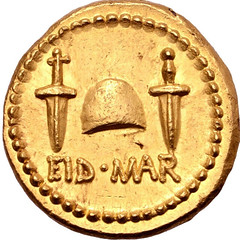 An Italian coin dealer was arraigned in Manhattan on Wednesday for possession of stolen coins worth one million dollars - after one he gave to his colleague sold for $4.1million.
An Italian coin dealer was arraigned in Manhattan on Wednesday for possession of stolen coins worth one million dollars - after one he gave to his colleague sold for $4.1million.
Italo Vecchi was charged with one count of grand larceny in the first degree, two counts of conspiracy in the fourth degree and second degree criminal possession of stolen property, among other charges.
The 75-year-old worked with British coin dealer Richard Beale, who was charged in March over the fraudulent $4.1 million sale of the 'rarest and most valuable' coin in the world.
He arrived at criminal court at 3 p.m. handcuffed and with a cane, and was released within a half hour - leaving alongside his lawyer, Withers international law firm defense attorneys Georges Gilbert Lederman and Wendy Dickieson.
The District Attorney's office agreed to his release on his own recognizance.
Between 2013 and 2014, Vecchi, who is Italian citizen living in the United Kingdom, allegedly sold two rare coins to Beale without provenance.
One of the coins was referred to as the 'Eid Mar' coin, referring to an ancient Roman gold coin minted in 42 B.C. to celebrate the assassination of Julius Caesar on March 15 of 44 B.C.
But Beale, 38, allegedly falsified the coin's ownership history documents, known as its 'provenance', to make it more valuable and allow him to fetch a higher price for it.
The other coin, known as the 'Sicily Naxos' coin, was created in 430 B.C. and is one of the 'rarest and most prized ancient coins in the world,' according to the complaint.
Vecchi has allegedly been selling illegal coins for decades, according to court documents.
In 1992, the defendant was detained by United States customs officials for attempting to smuggle undeclared ancient Greek coins into the United States in his briefcase.
And then in 2012, the defendant also falsified provenance for a 4th B.C.E. silver coin, called an Akragas Dekadrachm, which was being sold for one million dollars at the annual New York International Numismatics Convention.
To read the complete article, see:
Dealer of the 'world's most expensive coin' which 'fraudulently sold' for a record $4.1M after its ownership records 'were falsified' is charged with grand larceny in NYC
(https://www.dailymail.co.uk/news/article-12224073/Dealer-worlds-expensive-coin-sold-4-1M-charged-grand-larceny-NYC.html)
To read earlier E-Sylum articles, see:
RICHARD BEALE OF ROMA NUMISMATICS ARRESTED
(https://www.coinbooks.org/v26/esylum_v26n11a16.html)
IAPN STATEMENT ON FALSE PROVENANCES
(https://www.coinbooks.org/v26/esylum_v26n12a13.html)
"MILLION PENNY HOARD" SOLD
Leon Saryan passed along this follow-up about that "million penny hoard" found in California. -Editor
More than a week after capturing the interest of the entire nation, a California family's bounty of 1 million copper pennies has officially changed hands.
John and Elizabeth Reyes, who discovered the massive cache of precious metal coins in the home that previously belonged to Elizabeth Reyes' father, say they've completed a sale for the pennies.
Since first speaking with NewsNation affiliate KTLA, the Reyes' story went viral and they received no less than a thousand offers. John Reyes said he was so inundated with inquiries that many interested parties were left without an answer, their messages forever lost as social media requests and unread mail in his inbox.
There were some people that were legit, bonafide, really good prospects that I had just completely missed,
he said. Because of the influx of messages that I received, it was just overwhelming.
But despite not being able to respond to every interested party, he said his family is happy with the person who ended up making the purchase.
A major prerequisite was a desire and ability to actually see the potential of the coins rather than simply their face value.
We wanted to make sure that it was somebody that was going to have genuine interest in the find,
John Reyes said.
Although the value of the coins themselves was only about $10,000, the couple was asking for more than twice that, hoping that a collector or investor might be willing to buy a lottery ticket in the form of thousands of pennies.
He wouldn't disclose the final sale price — non-disclosure agreements were a key part of the transaction — but he admitted that his family was more than satisfied
with the number.
He said anonymity was a frequent request with the majority of the prospective buyers, many wanting to avoid a media firestorm like the one the Reyes family just experienced.
To read the complete article, see:
Sold! California family sells 1 million pennies found in relative's home
(https://www.msn.com/en-us/money/realestate/sold-california-family-sells-1-million-pennies-found-in-relative-s-home/ar-AA1cR5Jw)
To read the earlier E-Sylum article, see:
THE MILLION-PENNY HOARD
(https://www.coinbooks.org/v26/esylum_v26n24a31.html)
INDIGENOUS PEOPLES DAY TOONIE DESIGNERS
Here's an article from CBC News about the artists behind the Royal Canadian Mint's Indigenous Peoples Day coin. -Editor
Artwork created by three Indigenous women will now be in the hands of millions, on the first Canadian coin to feature the collaborative work of multiple artists.
In Ottawa on Tuesday, the Royal Canadian Mint unveiled a commemorative toonie to celebrate National Indigenous Peoples Day.
Megan Currie, a Dene woman from English River First Nation in Saskatchewan who lives in Regina, said having her work featured is "quite an honour," especially to share the space with two other Indigenous women.
"It's a circulation coin so to know it's going to be in the hands of all Canadians is quite fantastic and is hopefully an opportunity to have them sit and reflect on everybody's role in reconciliation," Currie said.
The other artwork on the coin was made by Jennine Krauchi, a Winnipeg Métis artist, and Myrna Pokiak, who is Inuvialuk from Tuktoyaktuk, N.W.T.
Currie said the Royal Canadian Mint reached out to her over a year ago, inviting her to put forward different designs for the coin. She put forward three concepts and one was chosen.
"Central to the design is a blooming flower representing a new day but within that flower is a representation of a person holding up a child and that represents that there is hope for our future," she said.
Attached to the middle flower there are two other blossoming flowers which Currie said represent the sun, a new day and a new beginning.
To read the complete article, see:
Indigenous Peoples Day toonie features message of hope, artist says
(https://www.cbc.ca/news/indigenous/commemorative-toonie-megan-currie-design-1.6885566)
GOLD MORGAN COMITIA AMERICANA MEDAL DISPLAY
The unique gold Comitia Americana medal for Daniel Morgan at Cowpens is on display at the Museum of the American Revolution in Philadelphia. Here's the press release. -Editor
A unique gold medal celebrating the Revolutionary War victory by Brigadier General Daniel Morgan over British Army forces in the 1781 Battle of Cowpens in South Carolina is making its first appearance since it sold at auction for $960,000 in April 2022. It apparently also is the first time it is available for general public viewing since its creation in 1839.
The winning bidder in the Stack's Bowers auction, Brian Hendelson, president of Classic Coin Company (www.ClassicCoinCompany.com) in Bridgewater, New Jersey, has loaned the historic Daniel Morgan at Cowpens medal and its original red leather and purple velvet presentation case to the Museum of the American Revolution in Philadelphia (www.AmRevMuseum.org).
Insured now for more than $1 million, it is a featured part of an exhibit entitled At
War with a South Carolina Regiment, 1779-1782
that is now on display at the museum.
‘I've collected early Americana for many years, including historical treasures from the Revolutionary War period. Adding the Daniel Morgan at Cowpens gold medal to my collection certainly is a tremendous honor. It commemorates an important event in early American history and honors a Revolutionary War hero who often is overlooked today, said Hendelson.
After 182 years hidden away with previous owners, I'm delighted to loan this
national treasure to the museum so it now can be seen and appreciated by many
people,
he explained.
The medal is cataloged as Betts-593, Julian MI-7, Loubat 8.
Morgan led his Continental troops in a decisive victory over British Lieutenant Colonel Banastre Tarleton on January 17, 1781 at what is now the Cowpens National Battlefield in Gaffney, South Carolina.
The Museum's description of the battle states: The Battle of Cowpens turned the
tide of the war in the South. While British forces still held the coastal cities of Charleston
and Savannah, the Revolutionaries gradually reclaimed control of the countryside.
In March 1781, Congress authorized the creation of a large gold medal to honor Morgan. Struck in Paris by the French engraver Augustin Dupre, it measured 56 millimeters in diameter and weighed 4.8 troy ounces.
Morgan received the medal in 1790. He died in 1802 and his one-of-a-kind gold medal was among the items stolen in a burglary at the Pittsburgh Farmers and Mechanics Bank 1818. It was never recovered.
Morgan's grandson, Morgan Lafayette Neville, was an executive of the bank. In 1819, he began efforts to get a replacement medal, including writing to former President Thomas Jefferson who carried the original medal with him when he returned from Paris in 1789 to become the first U.S. Secretary of State.
Eventually, in July 1836, Congress approved "An Act to renew the gold medal struck and presented to General Morgan, by order of Congress, in honor of the battle of Cowpens." But the grandson died three years later in March 1839 before the medal was created.
Finally, in December 1839, based on the design from Paris used to create the stolen and missing medal, the Philadelphia Mint struck a single Morgan at Cowpens medal weighing 4.79 ounces of fine gold. It was subsequently presented in 1841 to Morgan's great-grandson Morgan Lafayette Neville, Jr. and it remained in the family until 1914. Since then, it has been privately owned by others including the family of banker, financier, and philanthropist John Pierpont Morgan Jr.
Known as the Comitia Americana (Latin for American Congress) series, Congress authorized only seven gold medals for heroes of the American Revolution. However, apparently only six were actually made for individual recipients and the Morgan medal is the only one now privately owned.
The six who received medals were General George Washington, General Horatio Gates, General Anthony Wayne, Gen. Nathanael Greene, Captain John Paul Jones (whose original medal has not been seen since his death in 1792 and may have been melted), and General Daniel Morgan. A medal authorized for General Henry Lee apparently was never stuck.
The nonprofit Museum of the American Revolution is located at 101 South 3rd St. near Independence Hall in Philadelphia. It is open daily from 10 a.m. to 5 p.m. Admission tickets can be purchased by calling 215-253-6731, obtained for a $3 discount online at www.AmRevMuseum.org, or purchased at the museum's front desk.
For additional information about Classic Coin Company, visit www.ClassicCoinCompany.com or call 908-725-5600.
To read the earlier E-Sylum article, see:
GOLD MORGAN COMITIA AMERICANA SURFACES
(https://www.coinbooks.org/v25/esylum_v25n09a34.html)
JEFFREY BRIGGS ANIMAL ALLEGORIES
Last week sculptor Jeffrey Briggs was named as a runner-up for the 2023 American Medal of the Year. Here are some interesting works by him that I came across on the website of Briggs Sculpture. See the next article in this issue for some works by his wife Lindley. -Editor
A SERIES OF BAS RELIEFS PORTRAYING ANIMAL / HUMAN RELATIONSHIPS
I have always believed that art should contribute to the moral and spiritual elevation and social betterment of its audience. The series of bas reliefs in this exhibit highlight themes and questions related to humankind's relationship to animals. Of particular concern to me is the loss of animal species due to our continuing destruction of the environment. . The future course of the Earth's biosphere will be determined by our actions, and as a fellow human and artist, I seek to contribute to the decades-long effort to make people aware of the effects of our choices on the environment and the animals around us.
I believe the way that we treat animals, reflects on our ability to become true stewards of the earth. The intention of this series of wall reliefs is to make the viewer more conscious of the ethical and psychological attitudes he or she may have inherited. As an artist, I want to use the strength of the pictorial image to raise awareness of the paradoxical attitudes we hold toward animals. My hope is that the awareness of these paradoxes will advance the changes necessary for us to better manage the earth's resources.
For more information, see:
A Series of Bas Reliefs
Portraying Animal / Human Relationships
(https://briggssculpture.com/JeffreyBriggsReliefs/BasReliefs/Reliefs.html)
Animal Allegories: a collection of Bas Reliefs Portraying Human/Animal Relationships Paperback – July 4, 2015
(https://www.amazon.com/Animal-Allegories-collection-Portraying-Relationships/dp/1514833980/ref=sr_1_12)
To read the earlier E-Sylum article, see:
2023 AMERICAN MEDAL OF THE YEAR AWARDS
(https://www.coinbooks.org/v26/esylum_v26n25a24.html)
LINDLEY BRIGGS RELIEFS & MEDALLIONS
Here are some works by sculptor Lindley Briggs that caught my eye. -Editor
For more information, see:
LINDLEY BRIGGS SCULPTURE RELIEFS & MEDALLIONS
(https://briggssculpture.com/LindleyBriggs/reliefsmedallions/rm1.html)
To read the earlier E-Sylum article, see:
2023 AMERICAN MEDAL OF THE YEAR AWARDS
(https://www.coinbooks.org/v26/esylum_v26n25a24.html)
NEW MEDAL OF NUMISMATICS PATRON ST. ELIGIUS
Frank Galindo submitted this item about a medal celebrating St. Eligius. Thank you. -Editor
New Medal Designed by Renowned Italian Sculptor
Sergio Pasetto has recently announced his new medal design honoring St. Eligius the Patron Saint of Numismatists. This issue will be a limited number of pieces. The medal was originally created in 2022 and only three were made. He was encouraged by a collector of St. Eligius medals to make a few more to be available to collectors of St. Eligius medals.
The medal's text reads from the top then continuing to the right reads ST. ELIGIUS NUMISMATIST BROTHERHOOD U.S.A. FOUNDED IN SAN ANTONIO TEXAS 1995,
There are four coins which are two French and two Swiss pieces around the medal enhancing the design.
The central figure is St. Eligius wearing a miter and striking coins. In the background there is a furnace. At the left is a basket with his working tools. Also, to the left on a ledge a cat observes his friend using his hammer, which is a symbol associated with the Saint. On the right side above the word BROTHERHOOD is amphora dropping water on a plant, which is a symbol of faith.
The octagon-shaped medal's dimensions are approximately 5 1/5 x 6 1/4
Pasetto is a distinguished artist and sculptor from Verona, Italy. He is a prolific sculptor, and has sculptures in both the Vatican and in the White House. The beautiful work of art that is at the White House is titled The Pyramid of Hope.
A big panel of Juliet &Romeo
is in Russia. Mr. Pasetto's works of art are listed in auctions on the internet. For all details concerning the medal price, etc., or for ordering his new St. Eligius medal, please contact Albert P. Pasetto. His contact information is the following e-mail address:
postalby@gmail.com.
Frank Galindo can be reached at karfra1@netzero.net if you are interested in more information about the St. Eligius Numismatist Brotherhood, USA. -Editor
TOMMY THOMPSON'S LEGAL LIMBO
There's nothing new to report here (at least not yet), but in case you were wondering, Columbus Monthly published an article about the legal limbo of S.S. Central America figure Tommy Thompson. -Editor
As the video stream blinks to life, the bearded inmate appears, sitting impassively as he waits for his virtual hearing to begin. Thomas Tommy
Thompson, wearing a short-sleeve brown shirt, his graying hair in a ponytail, occasionally glances to his right, scratches his beard and sips from a plastic cup.
It's April 14, 2023, Thompson's 2,677th day behind bars for keeping a secret.
The road leading to this moment stretches back decades, to the day in 1988 when Thompson, then a Battelle scientist, made one of the biggest discoveries of sunken deep-sea gold in history. Heralded as a genius at the time, he's a legal oddity today as he sits in a cell in a federal penitentiary in Milan, Michigan, unable—or unwilling—to reveal the location of 500 coins cast from some of that gold. For his refusal, he's been declared in contempt of court by Columbus federal judge Algenon Marbley and held for more than seven years, racking up $2.7 million in fines—and counting.
Sept. 11 marks the 35th anniversary of the day in 1988 that Thompson, a research scientist and inventor, located the S.S. Central America, known as the Ship of Gold.
The gold rush-era ship sank in a hurricane off South Carolina in 1857 with thousands of pounds of gold aboard, contributing to an economic panic. A few weeks after the ship's discovery, a high school marching band played When You Wish Upon a Star
and other songs, and hundreds later cheered Thompson as he sailed into Norfolk, Virginia, aboard a ship laden with gold coins and bars.
Part of our American heritage, this was history in the form of a national treasure. And we had found it,
Thompson wrote in America's Lost Treasure,
his account of the find.
His jubilation was short-lived. The very day that Thompson sailed into Norfolk—Oct. 4, 1989—39 insurance companies sued Thompson in federal court, claiming they had originally insured the gold that sank with the S.S. Central America. The treasure, they contended, belonged to them. Exacerbating Thompson's legal woes, a handful of his investors sued in 2005, arguing they paid him $12.7 million to find the ship but never saw any money. As his troubles mounted, Thompson moved into a mansion in Florida, refused to use his real name on utility bills and paid his rent with moldy $100 bills.
In 2012, federal judge Edmund Sargus ordered Thompson to appear in court in Columbus to disclose the whereabouts of the 500 coins minted from the ship's gold. Instead, Thompson disappeared. Three years passed before U.S. marshals tracked him down to a hotel near Boca Raton, where he was living with his longtime companion, Alison Antekeier. As recounted in court filings, the pair had taken numerous steps to avoid detection, counting How to Be Invisible
—a book about evading law enforcement—among their possessions.
v
In April 2015, Thompson pleaded guilty to failing to appear in 2012 and was sentenced to two years in prison and fined $250,000. Thompson's criminal sentence was then delayed until the issue of the gold coins was resolved. (Even if Marbley released him tomorrow on the contempt charge, Thompson must still serve those two additional years.)
Thompson's plea deal required him to answer questions in closed-door sessions about the whereabouts of the coins, which the government says are worth about $2.5 million. Importantly, he had to assist
interested parties in finding the coins under that deal. Despite that arrangement, including an hours-long interview in fall 2015, lawyers representing those suing him contended his responses weren't forthcoming.
On Dec. 15, 2015, Marbley found Thompson in contempt of court and ordered him to stay in jail—and pay that $1,000 daily fine—until he responded. In the years that followed, in hearing after hearing, Thompson would maintain there was nothing more he could say.
Federal law typically prohibits jailing defendants on contempt charges longer than 18 months. But such incarcerations can run much longer, with Thompson's tenure behind bars equaling a handful of others nationally. In each of those cases, judges ultimately released the individuals, ruling that further incarceration wouldn't change their minds.
Recent developments suggest Thompson may, too, finally see the light of day. Beginning in September 2022, Marbley hinted he was feeling conflicted about the situation. Though the court has not found sufficient merit in Mr. Thompson's motions, the court does hold its own concerns about the duration of Mr. Thompson's incarceration,
Marbley wrote in a court order.
The government is also ready to relent. In a May court filing, Glenn-Applegate said it was time to lift the contempt order and force Thompson to serve his two-year criminal sentence. He'd already said as much at the April 14 hearing.
Meanwhile, the legend of Thompson's discovery continues to grow. In January 2022, the largest S.S. Central America ingot ever offered at auction, an 866.19-ounce find known as a Justh & Hunter ingot, sold for $2.16 million through Dallas-based Heritage Auctions.
And on April 14—the same day as Thompson's latest hearing—National Geographic and BBC Studios' Documentary Unit announced the development of a three-part limited series, Lost Gold, that will tell Thompson's story. Next May, a 20th-anniversary edition of Gary Kinder's definitive history of the S.S. Central America discovery—Ship of Gold in the Deep Blue Sea
—will be released by Grove Atlantic Books.
Marbley will likely rule later this summer whether Thompson might celebrate that release free from his contempt charge, though still facing more time for the criminal conviction.
To read the complete article, see:
Tarnished Treasure: Will Shipwreck Hunter Tommy Thompson's Legal Limbo Finally End?
(https://www.columbusmonthly.com/story/lifestyle/features/2023/06/20/treasure-hunter-tommy-thompsons-legal-limbo-may-finally-end-gold-coins/70337309007/)
EAGLES ON WORLD BANKNOTES
A nicely illustrated article on the PMG site features eagles on world banknotes. Here's an excerpt - see the complete article online. -Editor
The eagle is a symbol of strength and freedom throughout the world, and it can be seen soaring on banknotes from many different countries.
National Bald Eagle Day is a day dedicated to celebrating and raising awareness about the bald eagle, the iconic national bird of the United States. This day is observed annually on June 20, in celebration of the day when the Second Continental Congress selected bald eagles as the national symbol of the United States in 1782.
The bald eagle is just one of the many kinds of eagles featured on banknotes from around the world. Here are ten examples.
To read the complete article, see:
Collection Inspiration: Eagles
(https://www.pmgnotes.com/news/article/11766/collection-inspiration-eagles/)
MEN PRINTED £12 MILLION FAKE BANKNOTES
This article from Kent, England discusses a counterfeiting scheme foiled by a Bank of England investigation. -Editor
Three men involved in a conspiracy to supply over £12 million of counterfeit banknotes must give up the real money they earned from their crimes.
Phillip Brown, John Evans and Nick Winter were all jailed following an investigation in 2019 by detectives from the Kent and Essex Serious Crime Directorate.
As part of the officers' enquiries they carried out the largest face-value seizure of fake currency in UK history following a raid at a printing press in Beckenham.
It is believed the defendants profited from their conspiracy by selling the counterfeit money to other criminals, with the Bank of England having removed notes with a total face value of over £1.9 million from UK circulation.
An investigation into the group's activities began when the Bank of England identified a new counterfeit paper £20 note had entered general circulation.
The note appeared to have been produced using the type of specialist equipment that would normally be associated with a company printing large volumes of magazines or leaflets.
Enquiries established parts and materials associated with the production of fake currency on a commercial scale had been ordered and were linked to a printing press owned by Winter in Kent House Lane, Beckenham.
A search warrant was carried out and inside officers found Brown and another man surrounded by printing equipment and large piles of counterfeit £20 notes, later confirmed as having a total face value of £5.25 million.
In the months that followed, further large amounts of counterfeit currency believed to have been printed by the group continued to be discovered.
To read the complete article, see:
Men who printed £12 million fake banknotes in Kent told to pay back money from their crime
(https://www.itv.com/news/meridian/2023-06-24/men-who-printed-12-million-fake-banknotes-told-to-pay-back-crime-money)
LOOSE CHANGE: JUNE 25, 2023
Here are some additional items in the media this week that may be of interest. -Editor
A Coin Update article by Michael Bugeja discusses coins "fouled up beyond all hope." -Editor
Many coins fall into the FUBAH category, including ones with scratches or environmental damage; the most irritating ones are stained. These may seem like restoration candidates at PCGS or NGC. However, chances are they will be returned in their original ungrade-worthy condition because dipping — removing a thin layer of a coin's surface — may be the only removal method, and even in those cases, the stain will remain, and the specimen will be permanently damaged.
I have written in the past about cleaning coins using MS-70 detergent or Jewel Luster (e-Z-est coin cleaner) dip. The former may remove light PVC damage or verdigris. The latter strips surface metal. True, some coins are candidates for a dip. Expert numismatists know which coins and what percentage of dip and water, etc., to use. (I can't share formulas here.) But in almost every case, this devalues the coin, earning a details grade from major holdering companies.
To read the complete article, see:
FUBAH coins: fouled up beyond all hope
(https://news.coinupdate.com/fubah-coins-fouled-up-beyond-all-hope/)
The Multnomah County Library is a fine-free library, and a patron just returned a book borrowed 65 years ago. -Editor
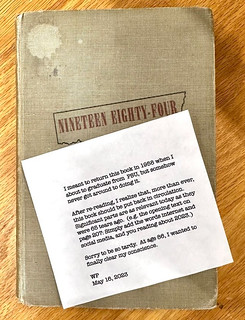 A patron in Oregon recently returned an overdue book 65 years after its check-out date.
A patron in Oregon recently returned an overdue book 65 years after its check-out date.
In a social media post, the Multnomah County Library said that someone recently returned a first-edition copy of "1984" by George Orwell.
It was originally checked out in 1958.
The MCL provided a picture of the book, as well as a note the patron left with it. The note reads:
I meant to return this book in 1958 when I was about to graduate from PSU, but somehow never got around to doing it.
After re-reading, I realize that, more than ever, this book should be put back in circulation. Significant parts are as relevant today as they were 65 years ago. (e.g. the opening text on page 207: Simply add the words internet and social media, and you are reading about 2023.)
Sorry to be so tardy. At age 86, I wanted to finally clear my conscience.
To read the complete article, see:
Library patron returns 65-years-overdue first-edition copy of '1984'
(https://komonews.com/news/offbeat/library-patron-returns-65-years-overdue-first-edition-copy-of-1984-multnomah-county-library-george-orwell-library-association-of-portland-cleared-conscience)
In another item for bibliophiles, here's an article offering some interior design tips. -Editor
Where once a library might have been a way to signal status to visiting society, today, a room full of books tells us a story about us: Where we came from, how we have struggled, what has lifted us, what we know for sure.
You can love everything about books and book culture but still feel a sense of overwhelm when faced with packed shelves. That's why I often find myself counseling people on how to rethink their displays. Here are some ways that you can integrate a love of books into a life while acknowledging a range of human desires for beauty, balance, and space.
One place book lovers who have become book collectors can start is by letting their existing space dictate how many books they allow themselves to have. In other words: be a goldfish that only grows to the size of your own fishbowl.
Interesting concept, but I know most numismatic bibliophiles aren't so disciplined. The books are the boss. But one good piece of advice I'd heard from John J. Ford was, "When you buy something cute, sell something less cute." And I did take that to heart over the years, gradually deaccessioning things that were no longer core to my interests, although I did often daydream about building an addition to the house.
While I had great fun assembling collections of different editions and binding variants of Evans's mint books, Mehl's guidebooks, U.S. Mint Reports etc., etc., once I was flat out of new shelfspace I consigned them for sale. And with my primary focus on U.S. numismatics, I couldn't justify forever keeping the sets I'd accumulated through various library purchases, such as Coole on Chinese coins, or Davenport's books on talers. Off they went for resale. -Editor
To read the complete article, see:
What to Do If Your House is Overflowing with Books
(https://lithub.com/what-to-do-if-your-house-is-overflowing-with-books/?)
THE BOOK BAZARRE
KOREA'S COIN BREAD
Stephen Pradier posted a link on our Facebook page to this article from South Korea about local baker making bread loaves with coin designs. You can have your money and eat it too! -Editor
Makers of Gyeongju's "10-won bread," a popular street food shaped like a Korean 10 won coin, are facing pressure from the Bank of Korea (BOK) to change its design.
According to relevant authorities, Thursday, the BOK requested makers of the treat stop using the coin's design for their bread.
"We are in discussions with the manufacturers of the 10 won bread about making design changes within legal boundaries, in order to ensure the continued operation of their local business," the BOK said in its official statement.
Gyeongju's 10 won bread is a pastry based on the design of Korea's smallest-denomination coin, featuring an image of Dabotap, a stone pagoda from Korea's ancient Silla Kingdom located in Gyeongju, North Gyeongsang Province.
Since one vendor started producing it in 2019, the bread has become a regional specialty. Currently, it is sold by 17 entities within the region, and its reach has expanded to Seoul via franchising.
Under the current regulations, the BOK permits public use of monetary designs under certain conditions, including nonprofit purposes. However, it does not allow for-profit use, arguing that "imprudent commercialization of monetary design could undermine trust in the monetary system."
Central bankers are a stuffy bunch. But it sounds like they'll work with the bakers to identify similar but acceptable designs. -Editor
To read the complete article, see:
BOK wants '10-won bread' to stop looking like money
(https://www.koreatimes.co.kr/www/biz/2023/06/602_353461.html)
FEATURED WEBSITE: ERROR-REF.COM
This week's Featured Web Site is Error-ref.com, the Error-Variety Ready Reference.
Error-ref.com is a comprehensive illustrated glossary of every conceivable defect associated with the minting process. It will contain detailed illustrated descriptions of hundreds of basic error types, numerous subtypes, and assorted effects associated with them. It is not designed to cover compound errors and multiple errors, as these occur in an infinite number of combinations and permutations. It is also not intended to be a catalog of specific coins and dies.
The Ready Reference is built upon a framework provided by a 22-page Comprehensive Error-Variety Checklist that was compiled by Mike Diamond some years back and that he continually updates. The checklist is available on this website.


